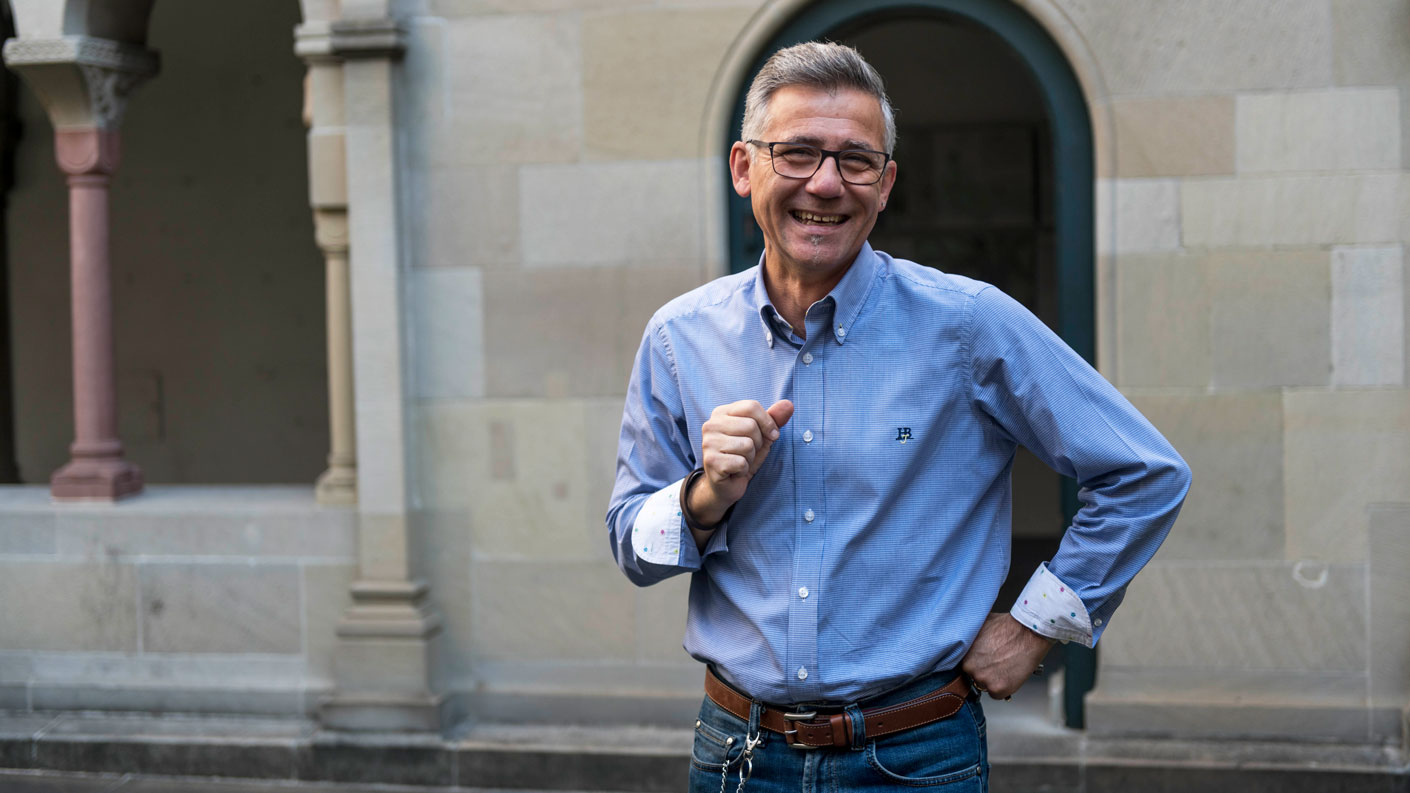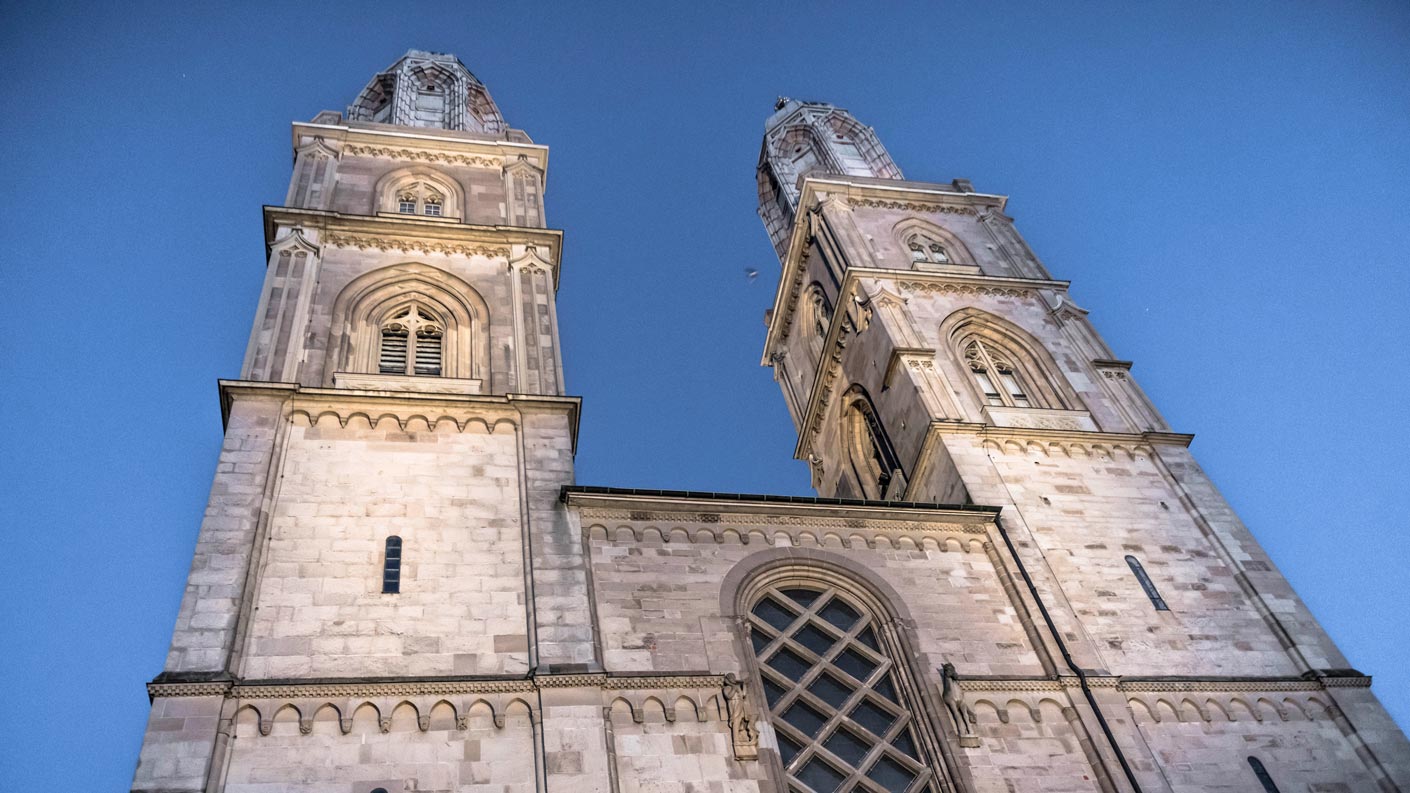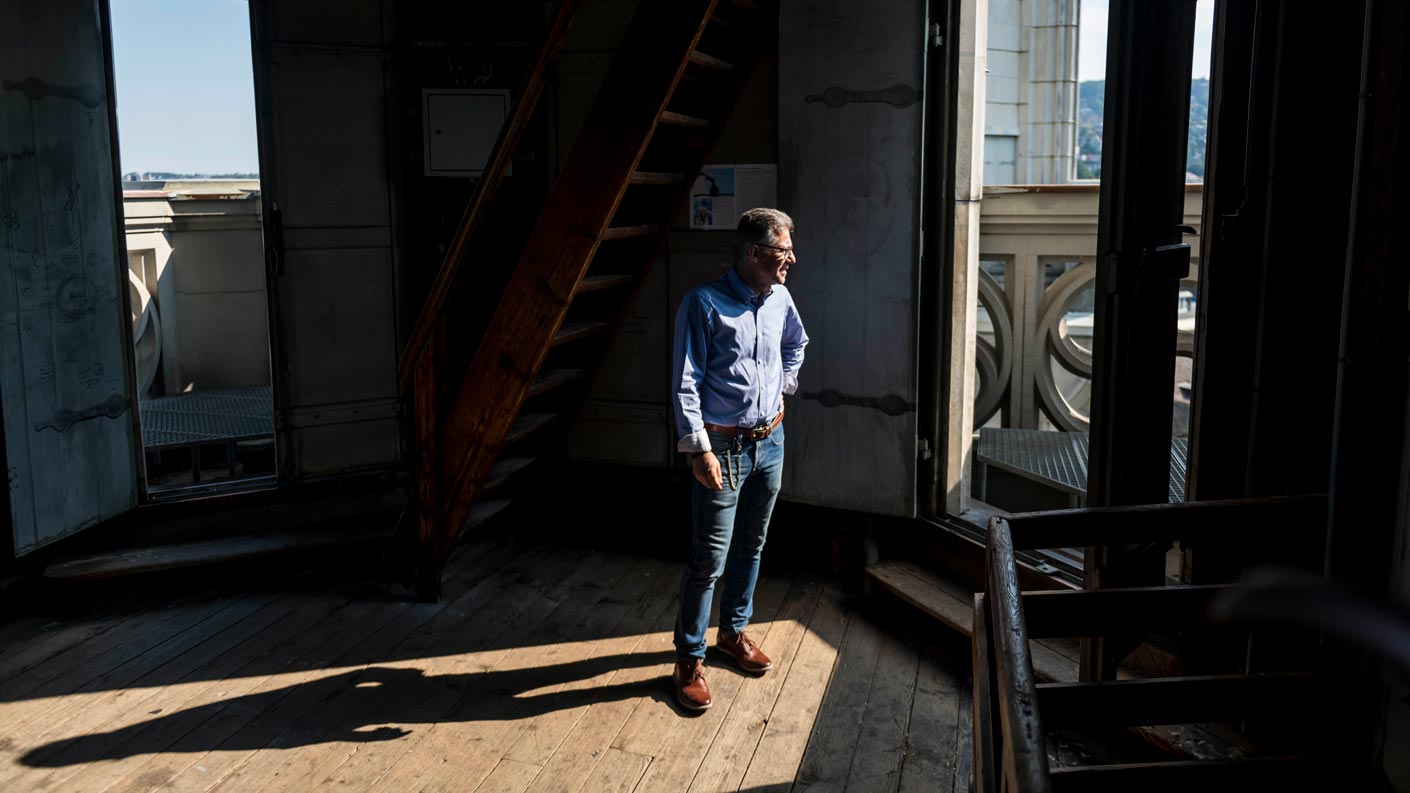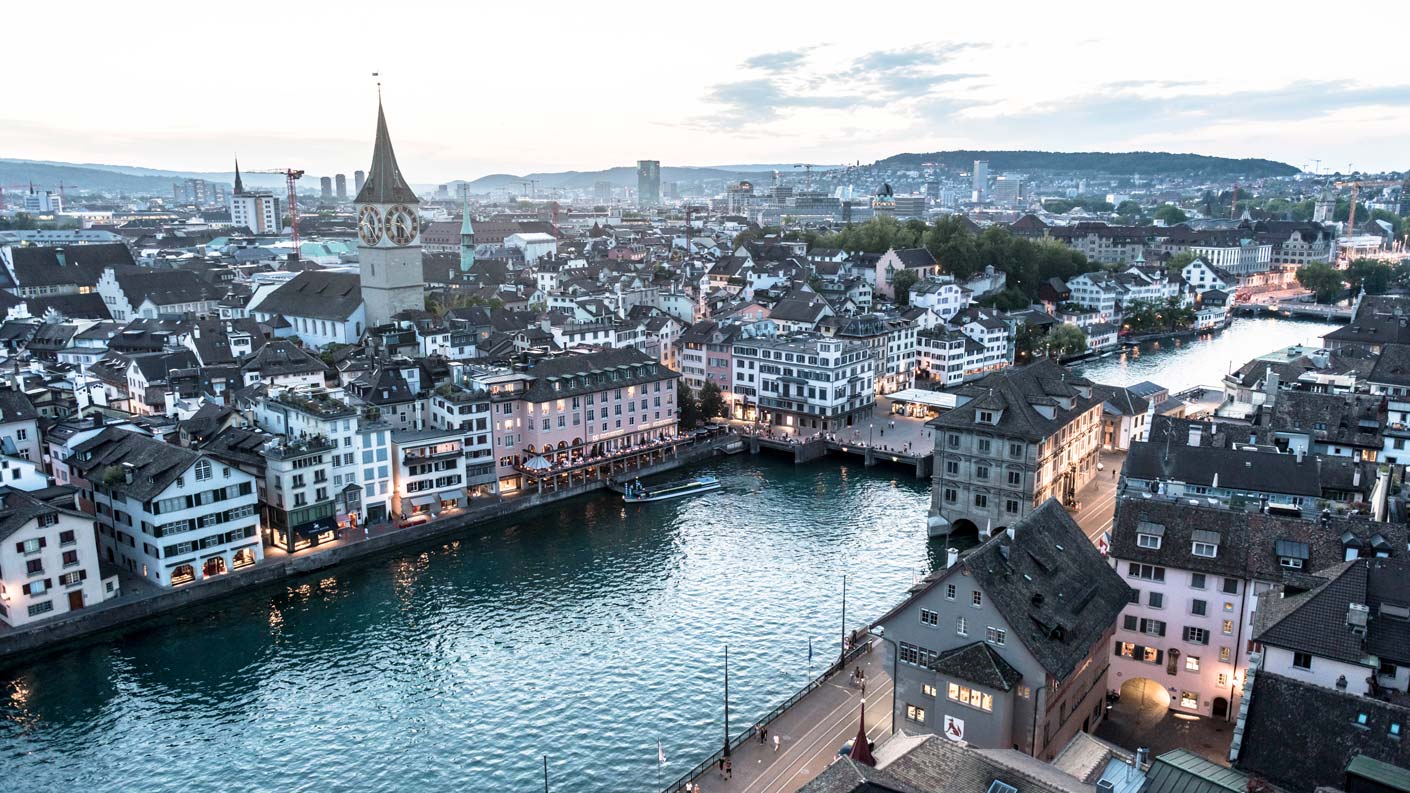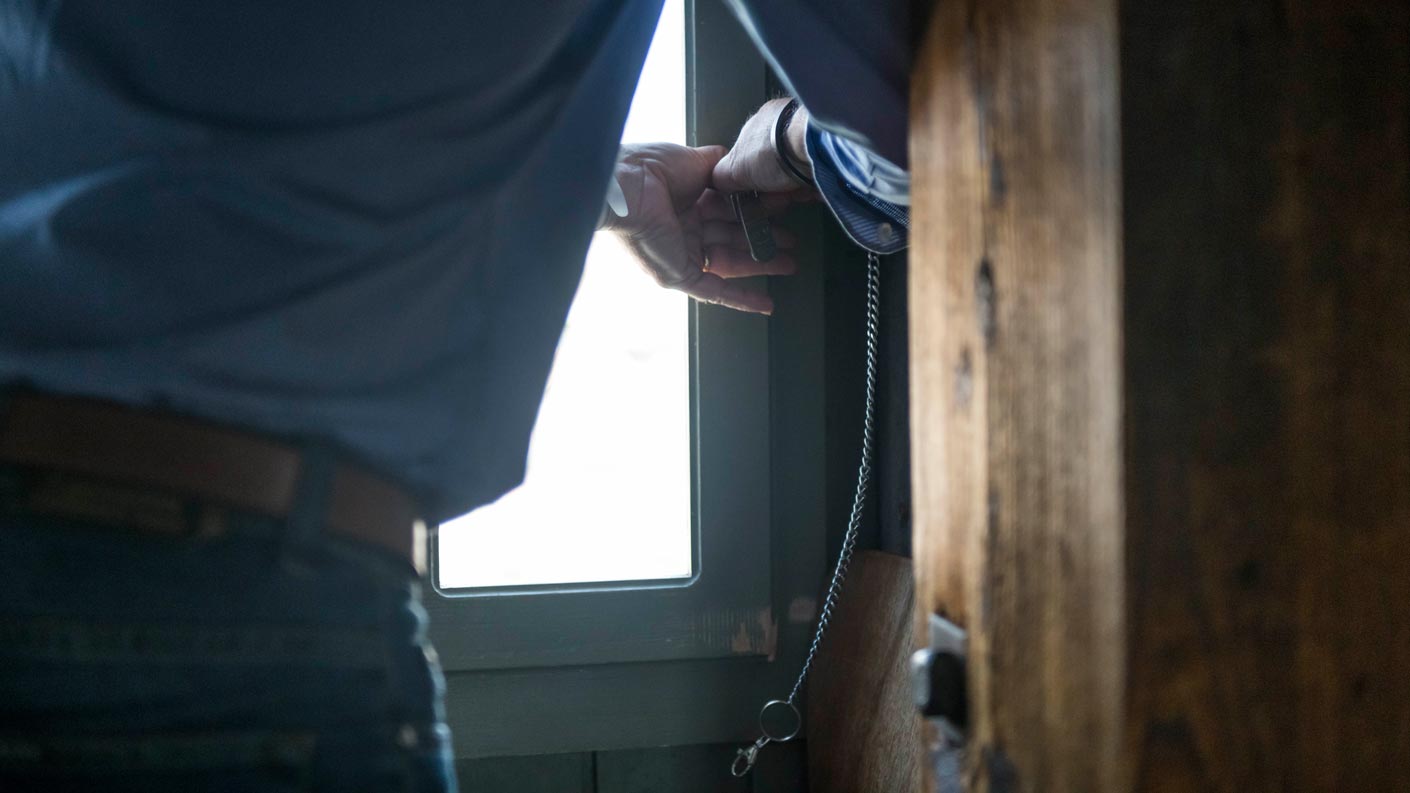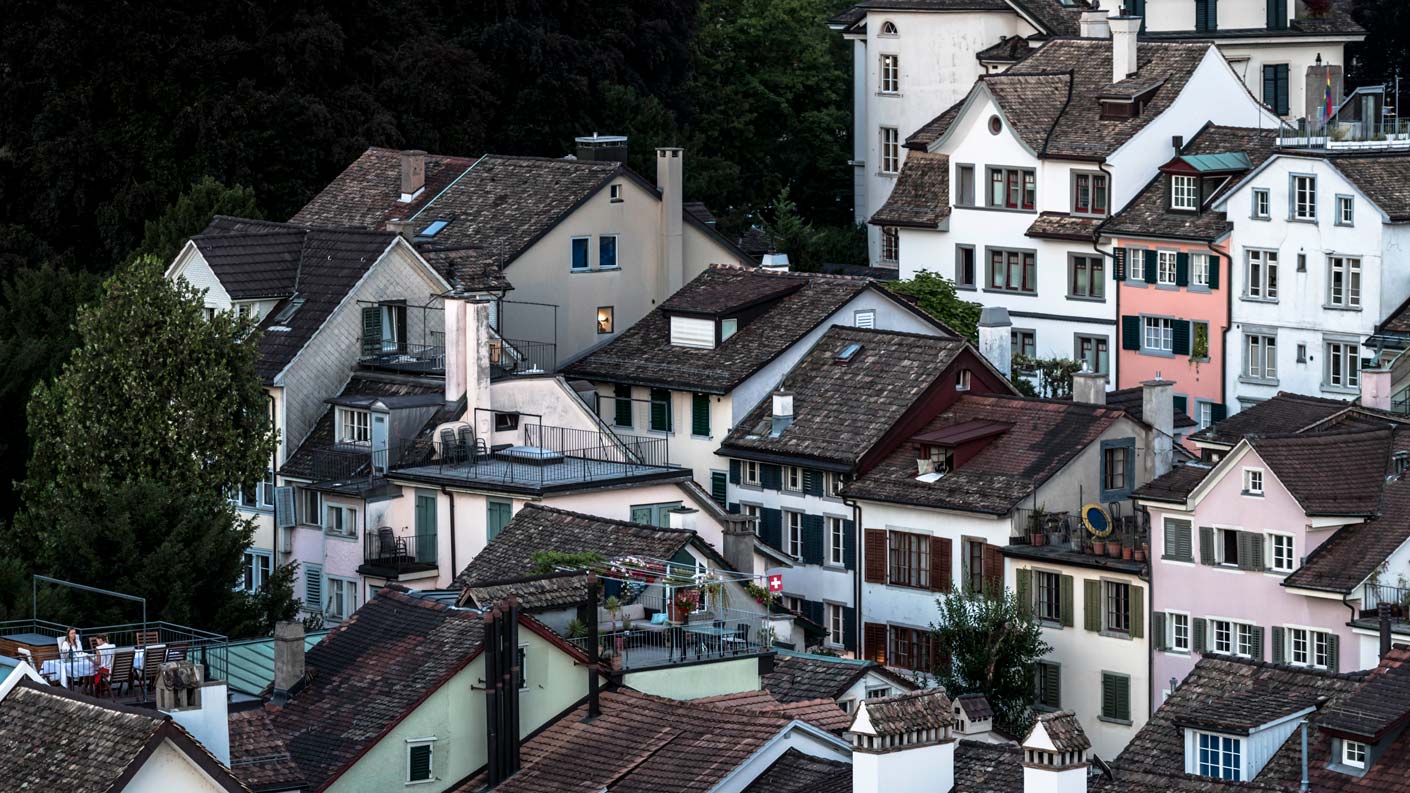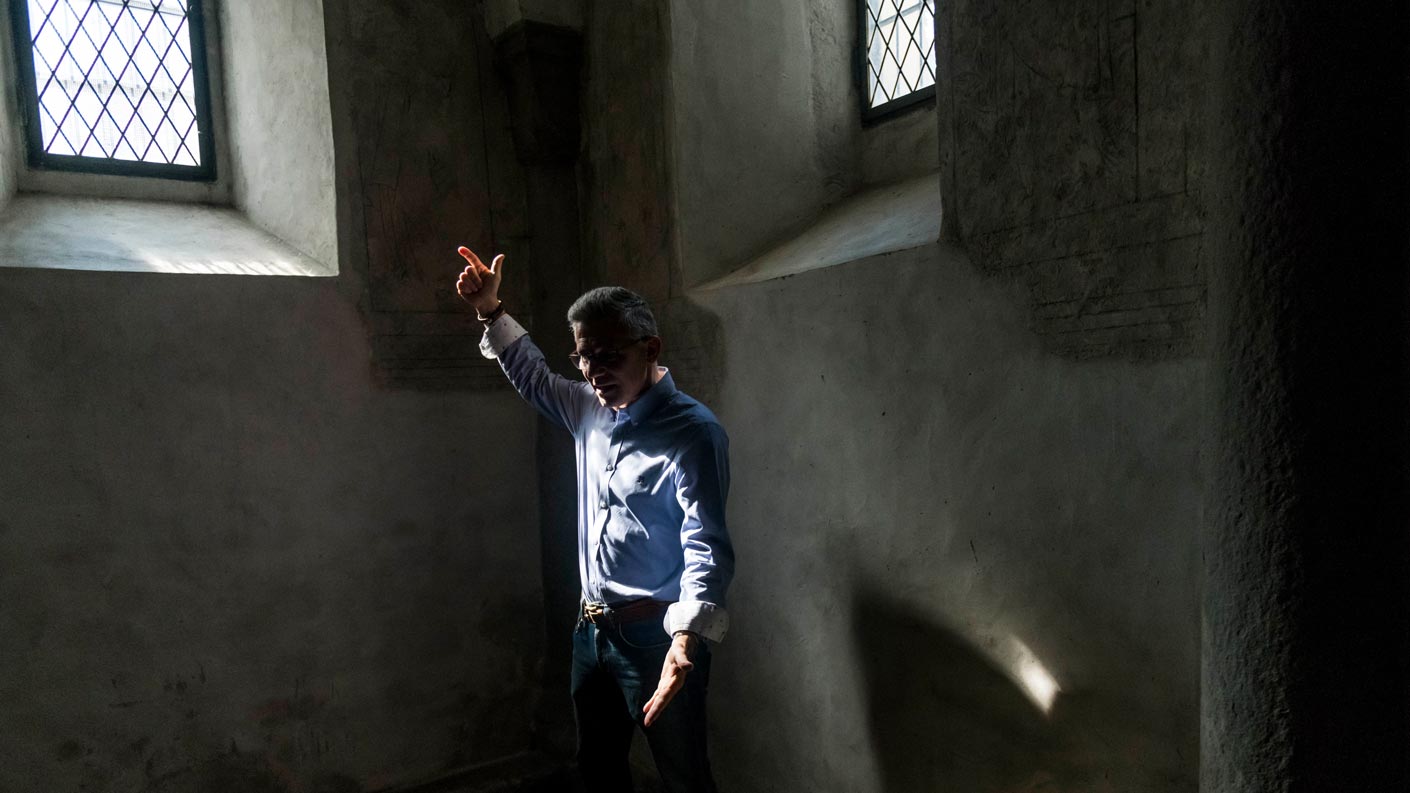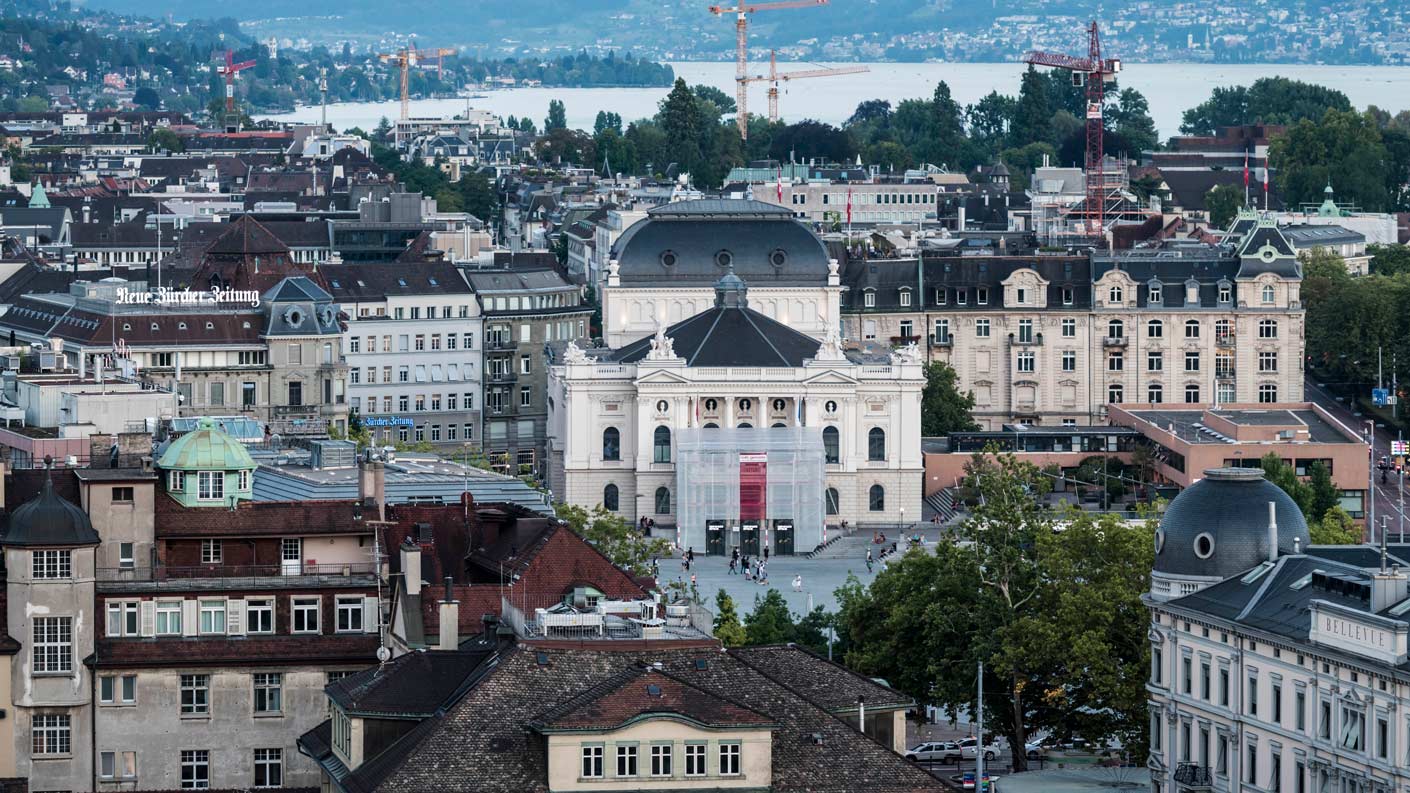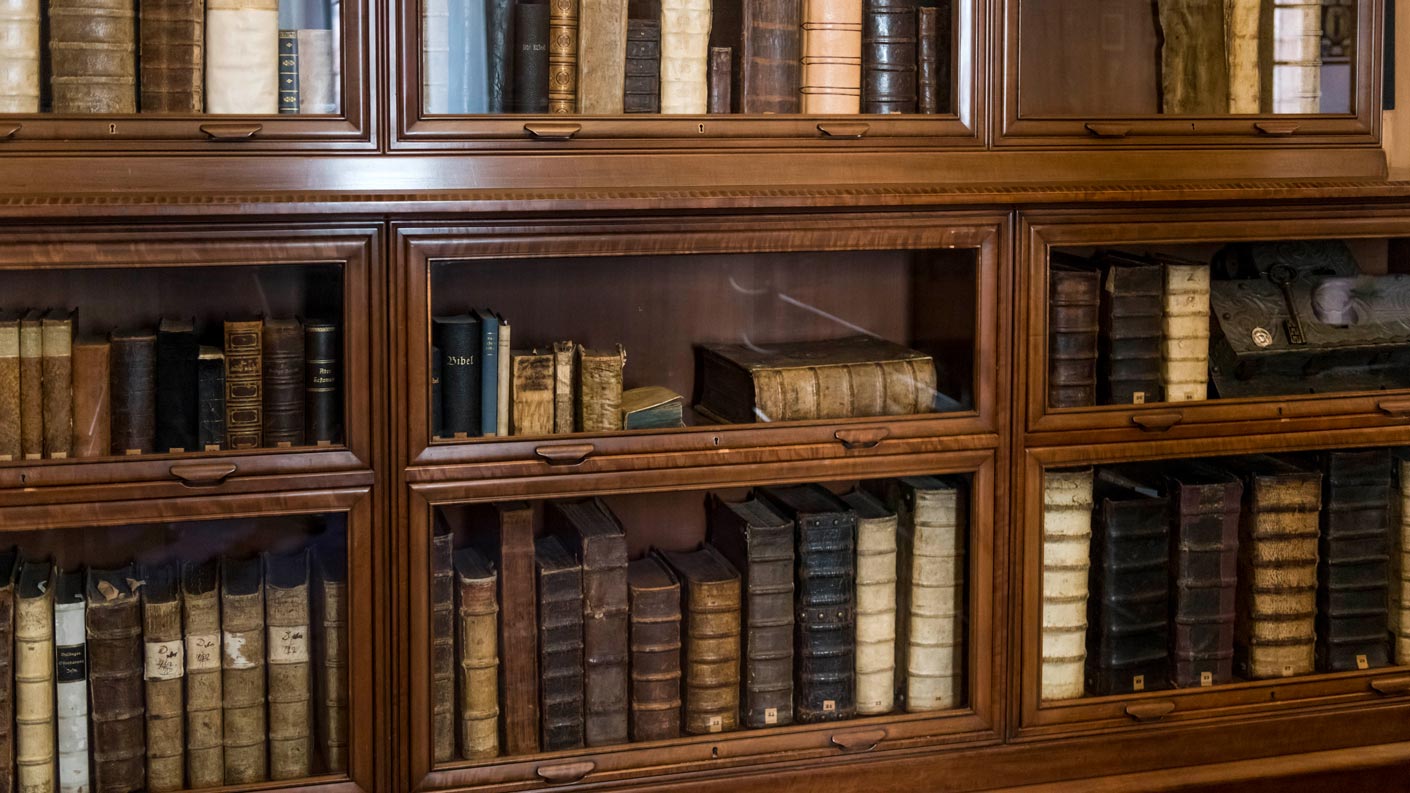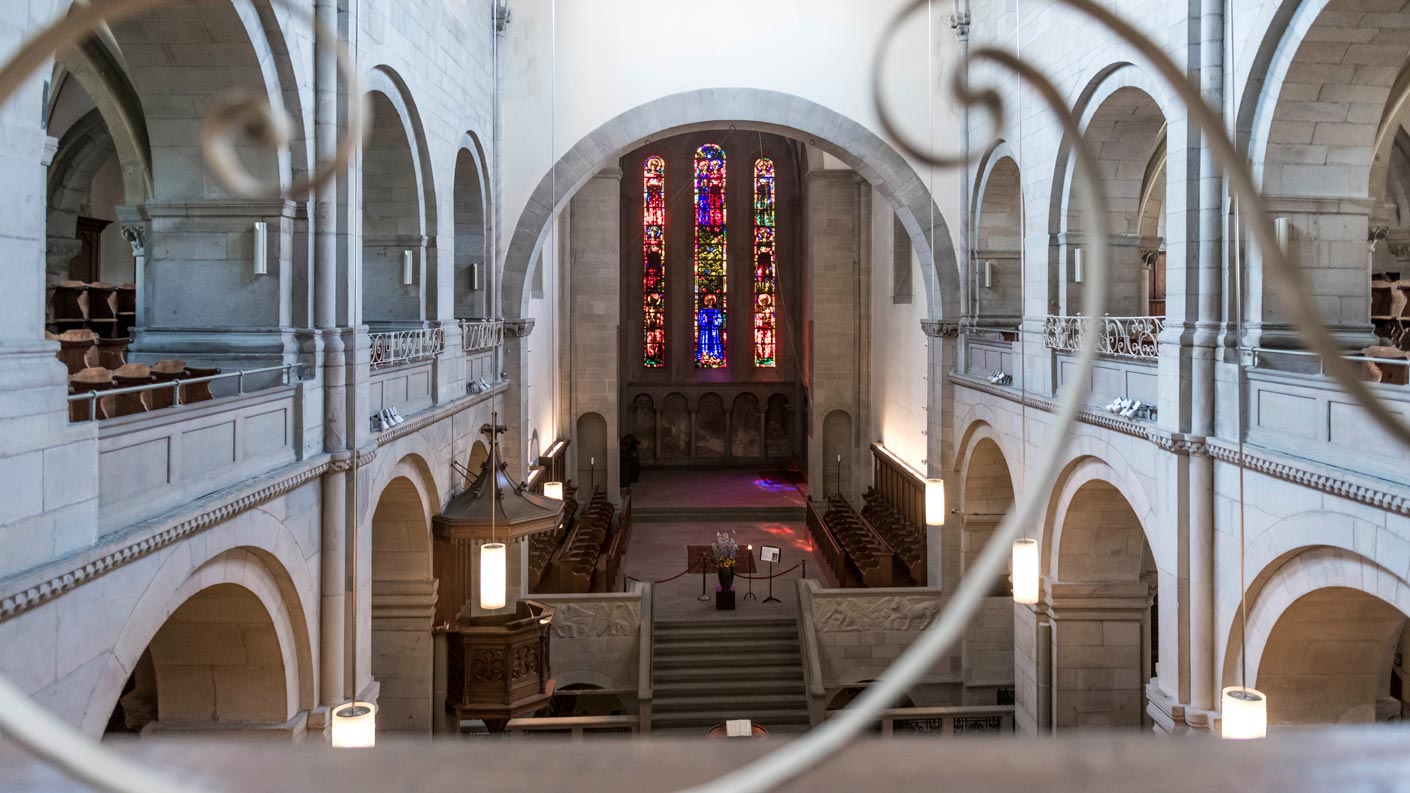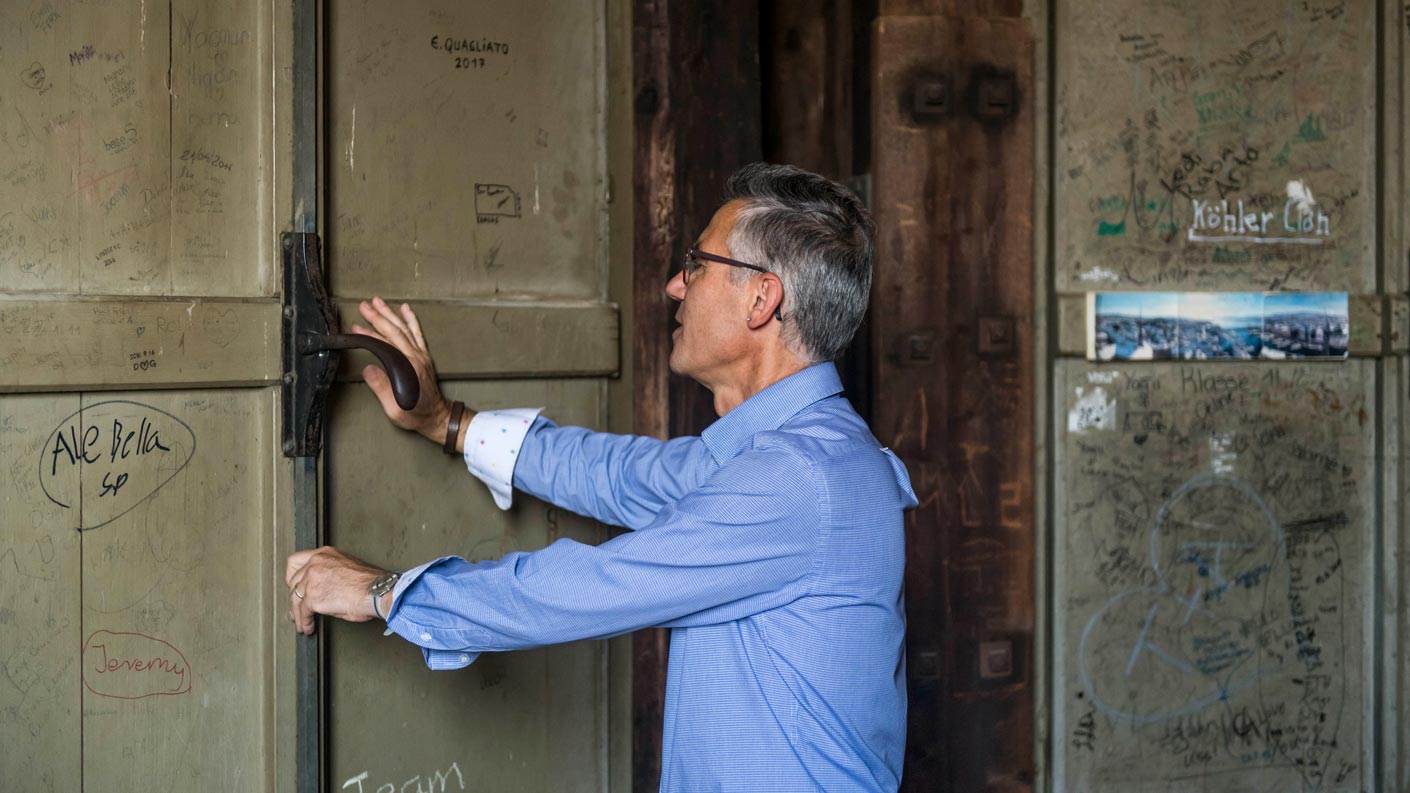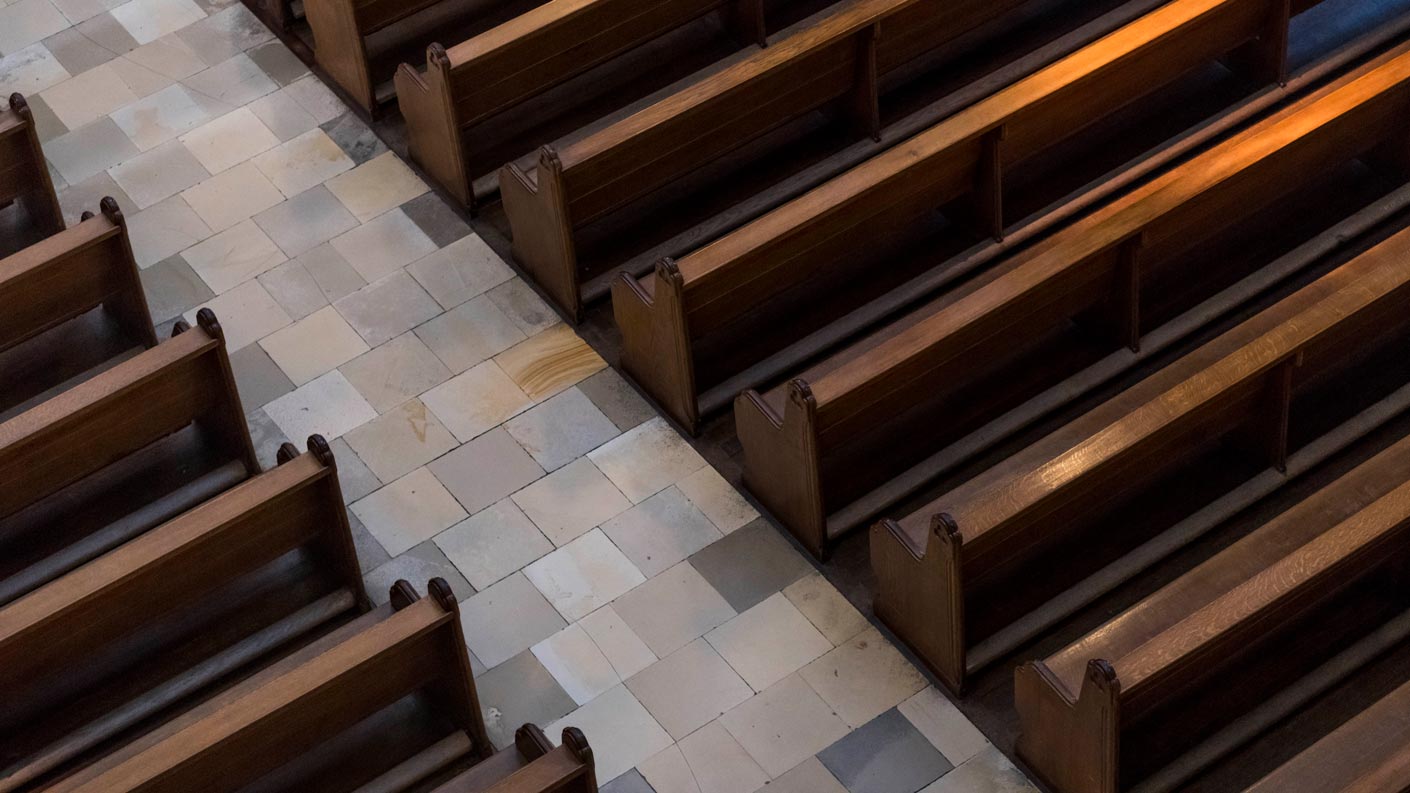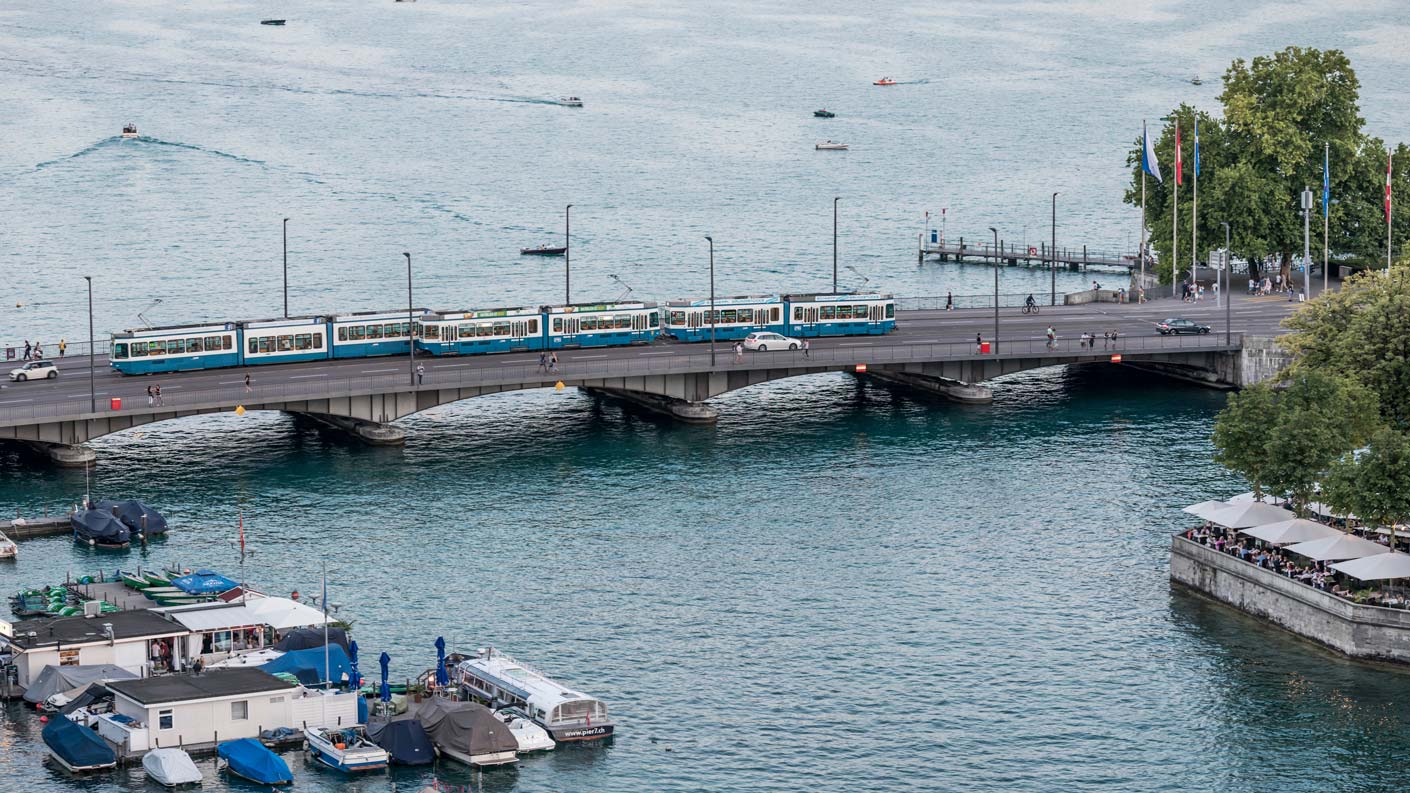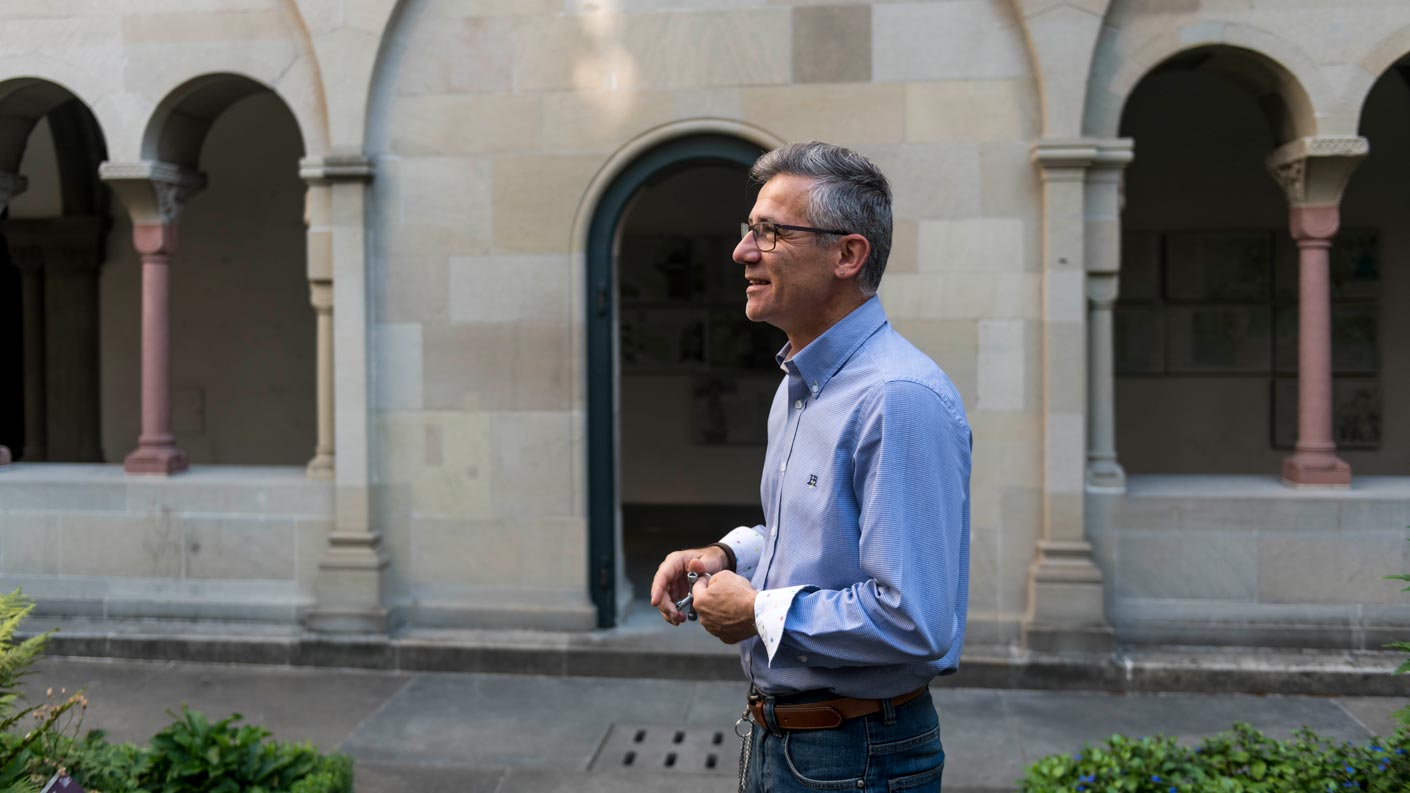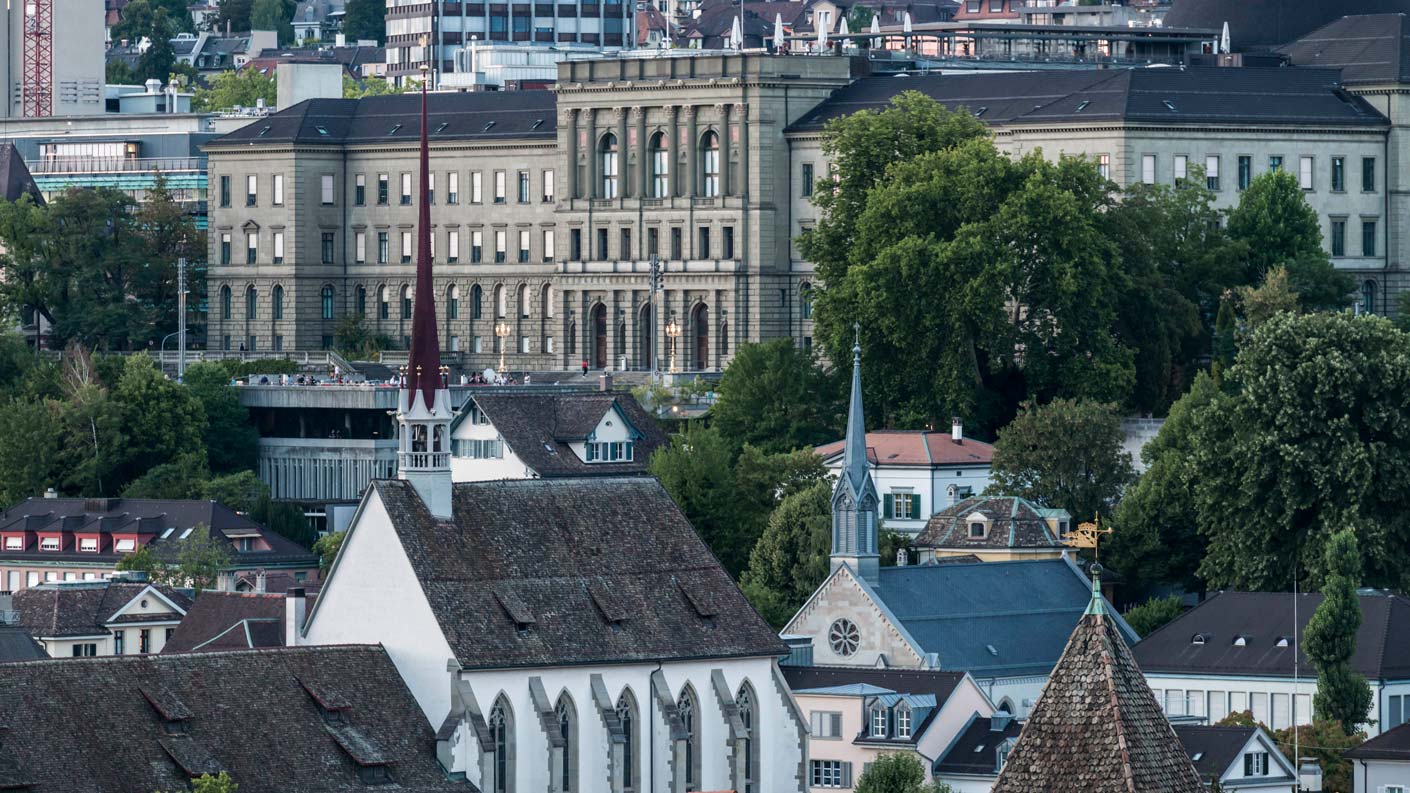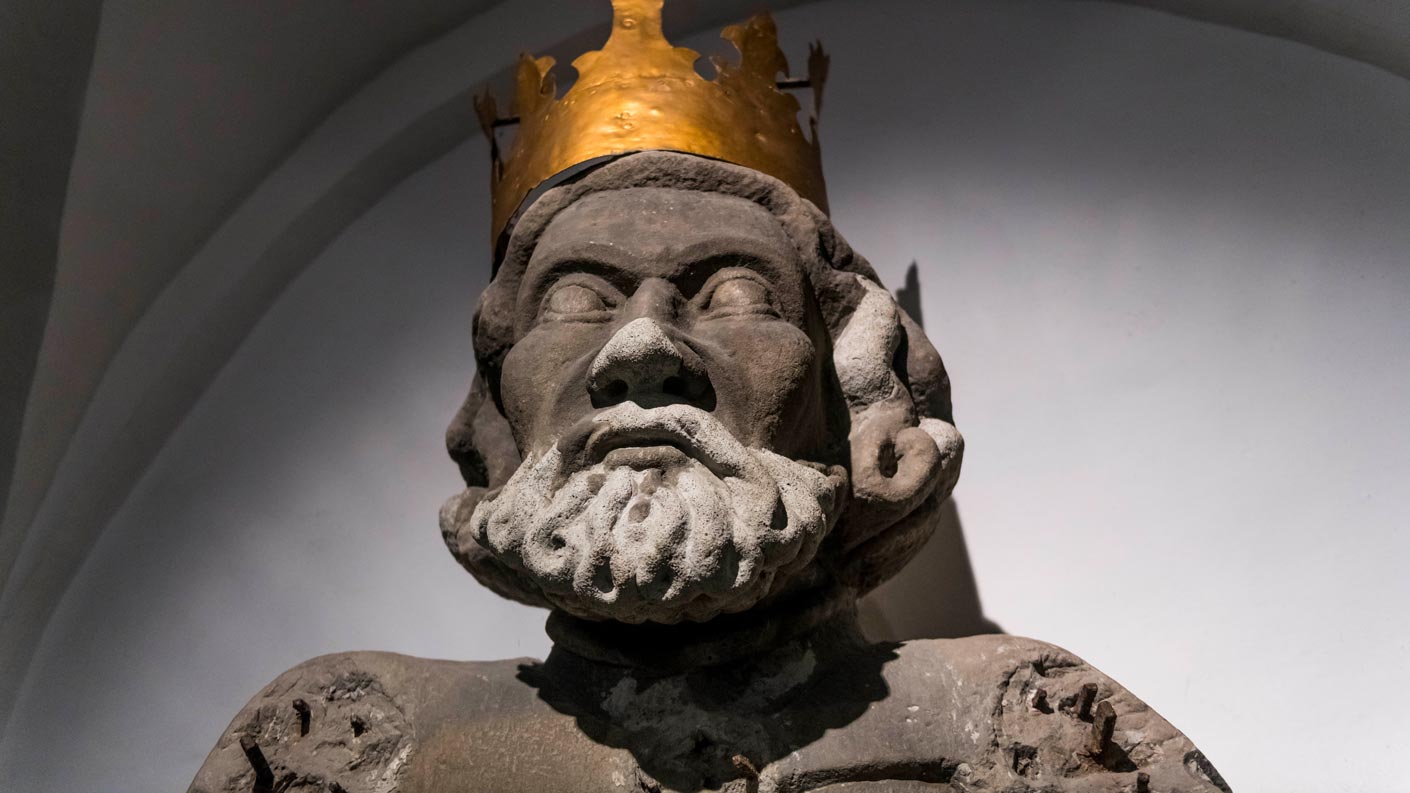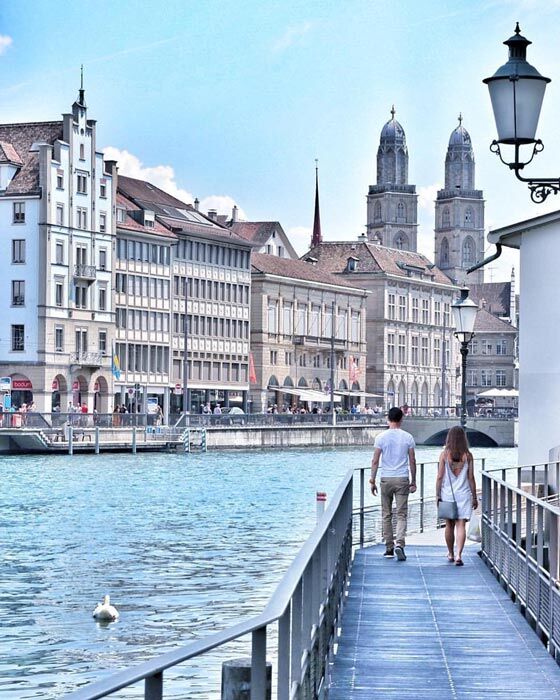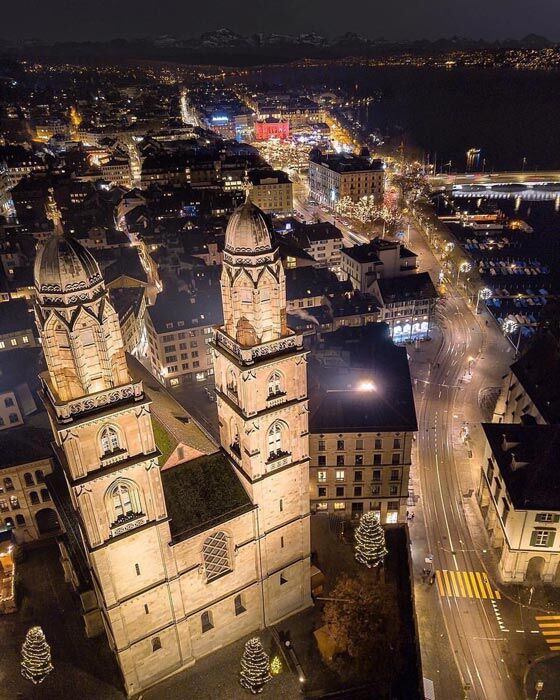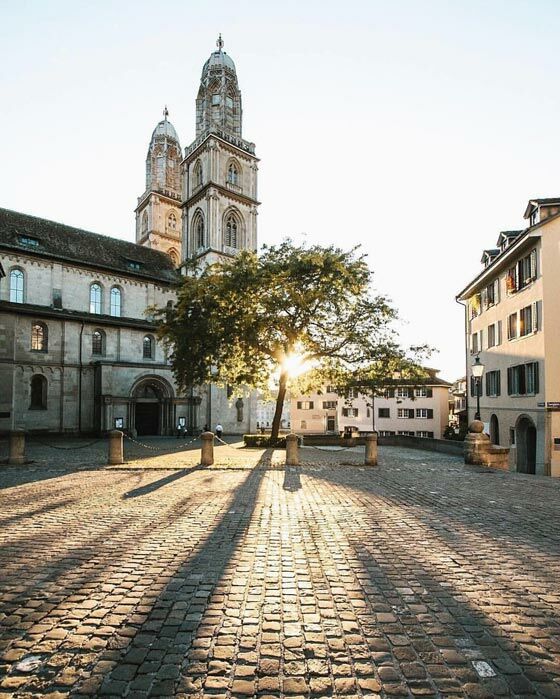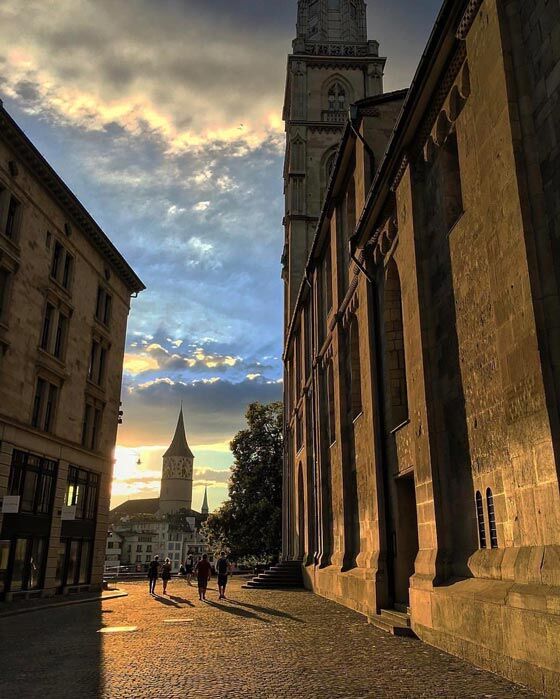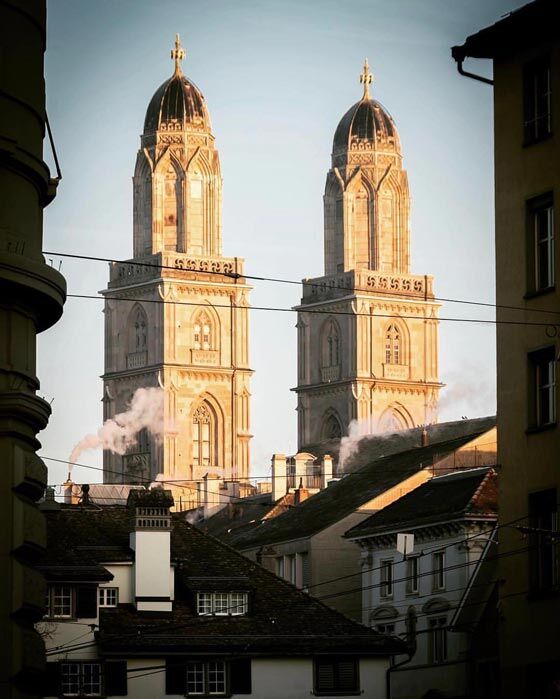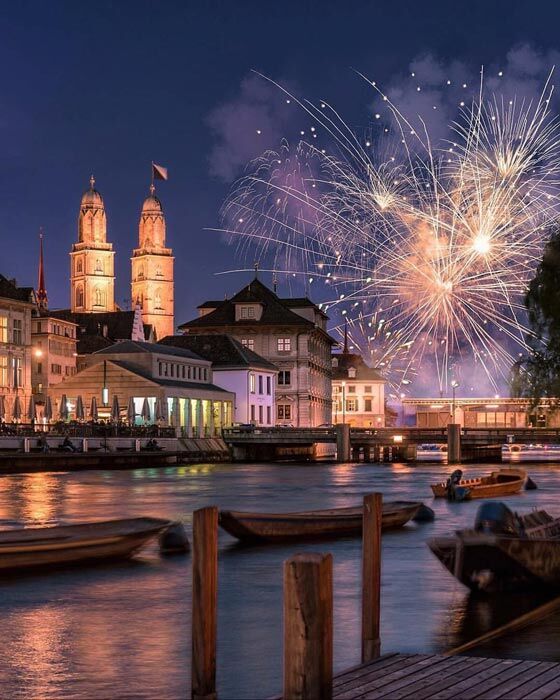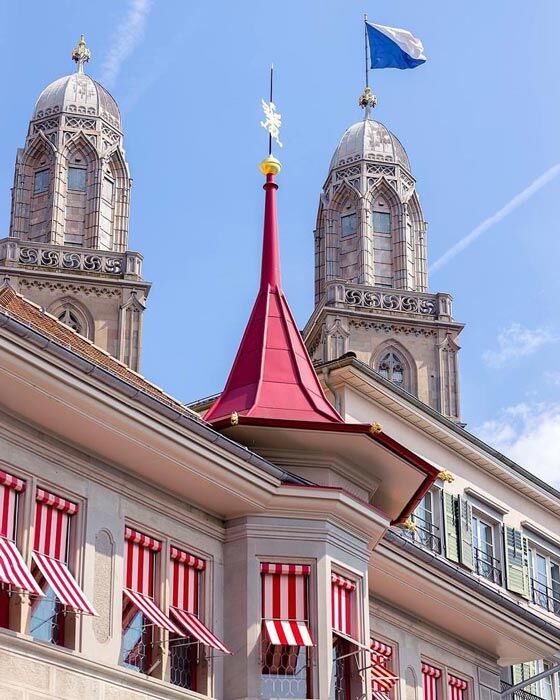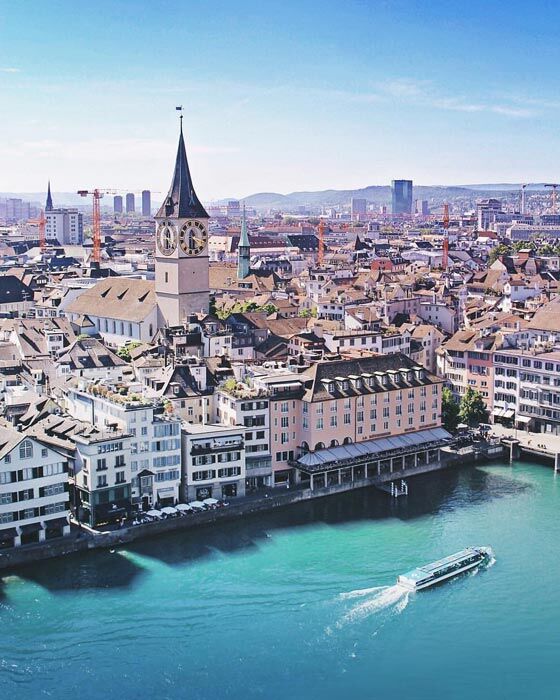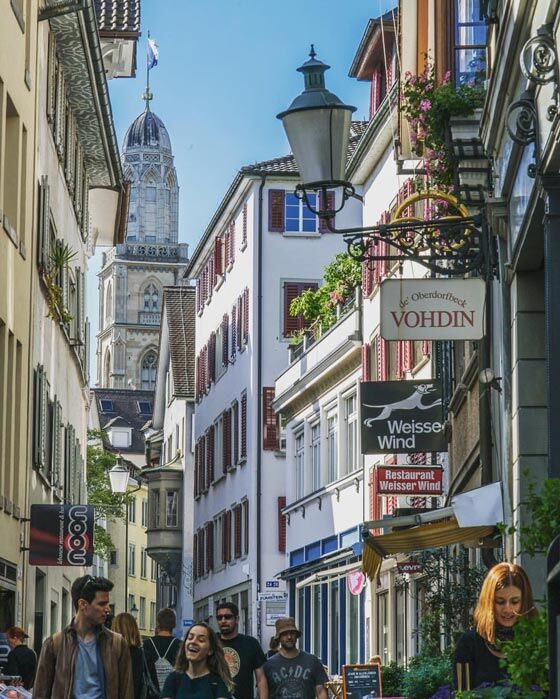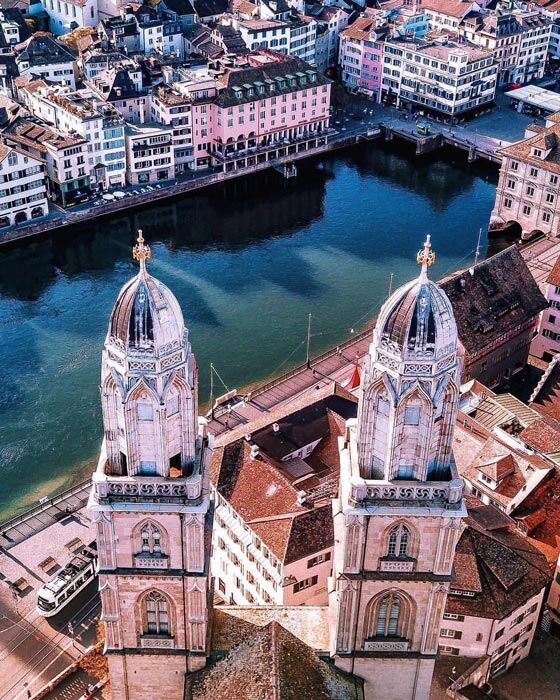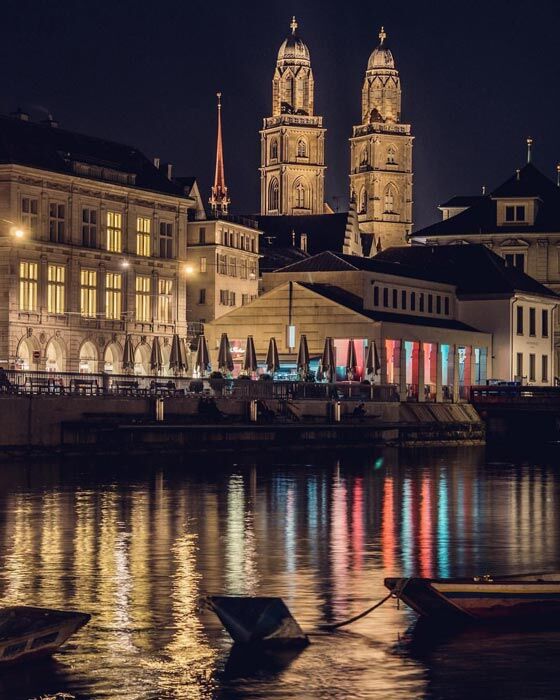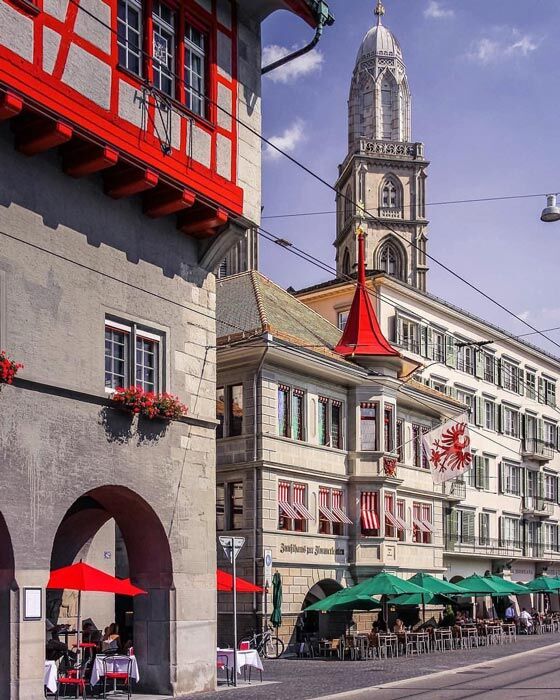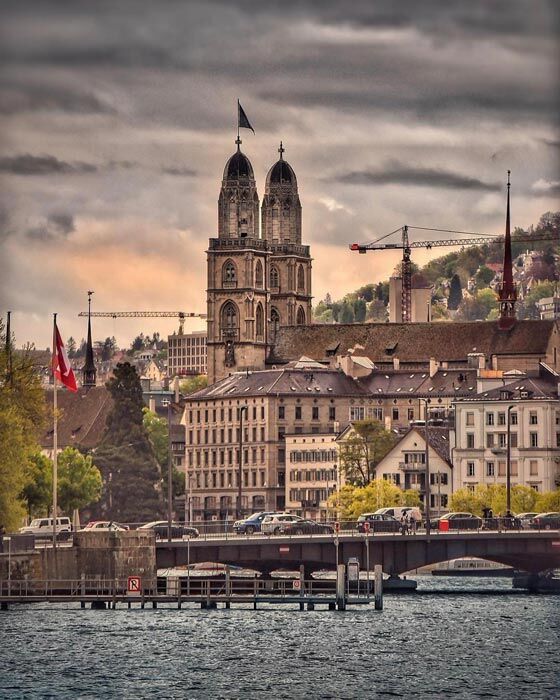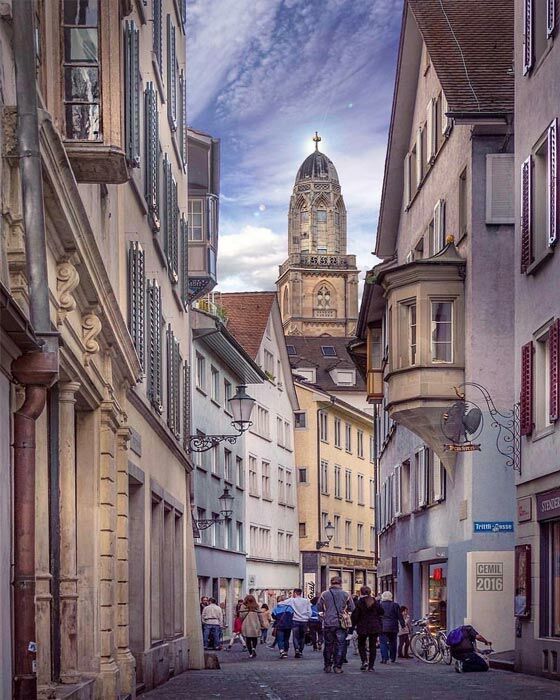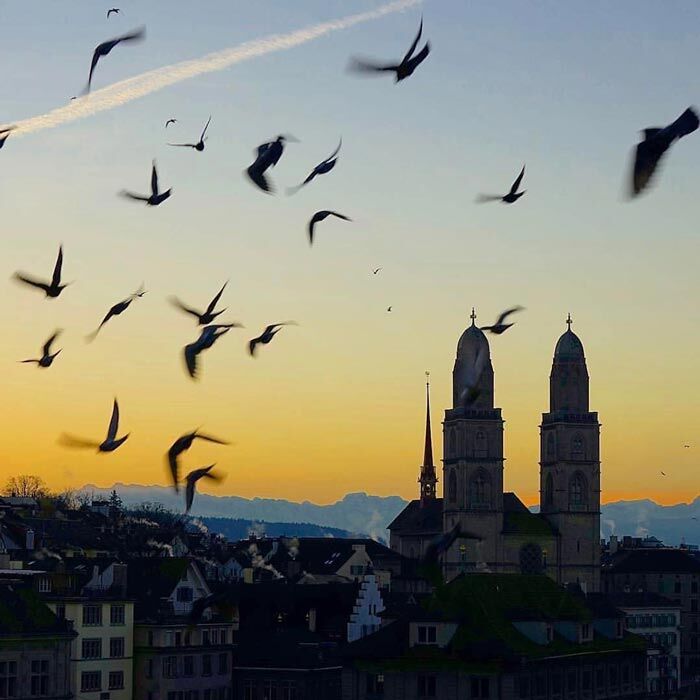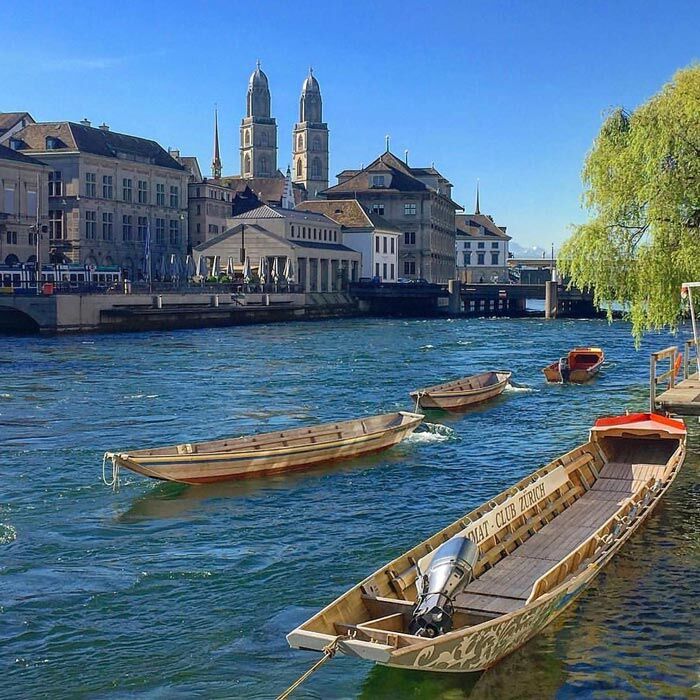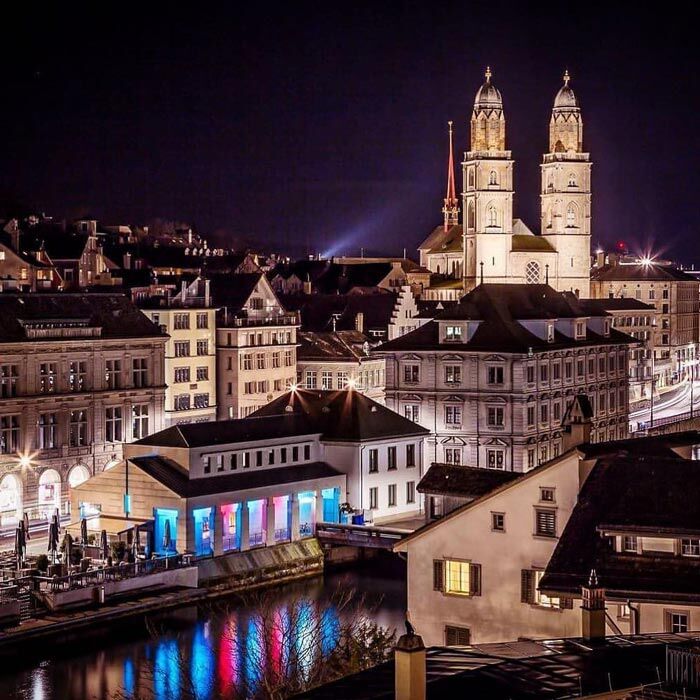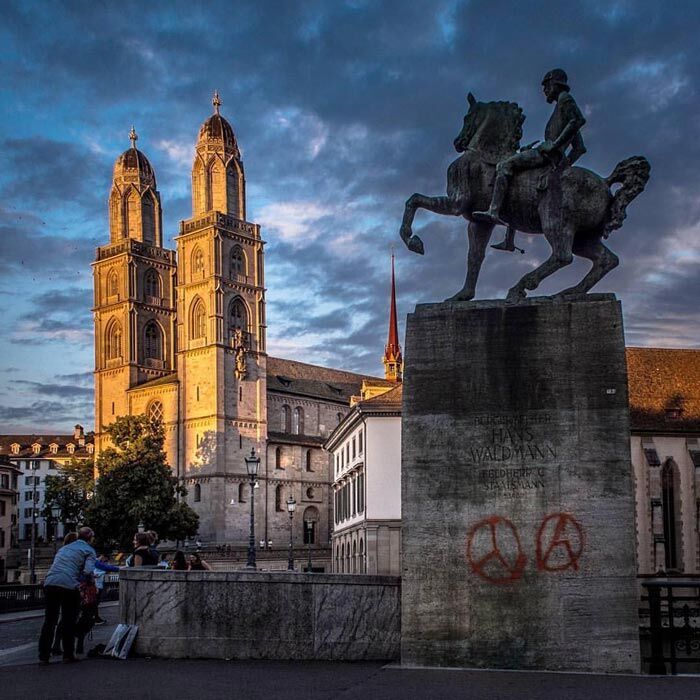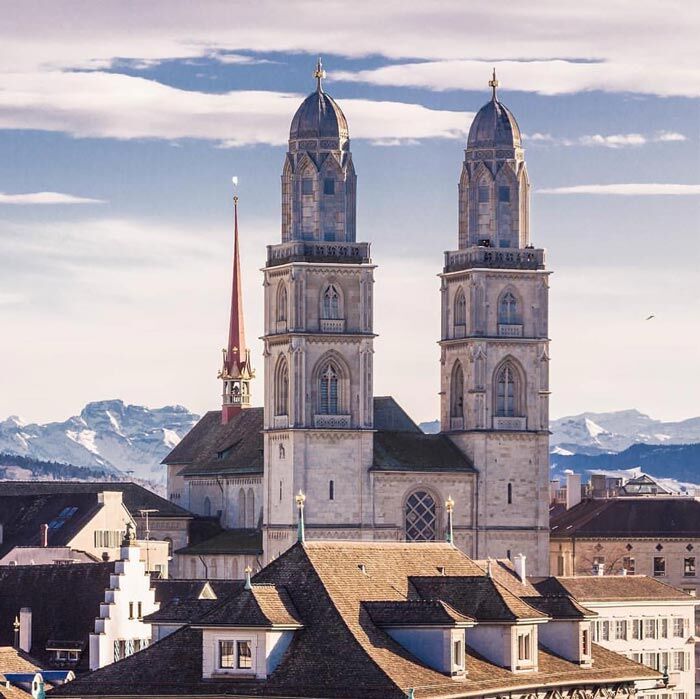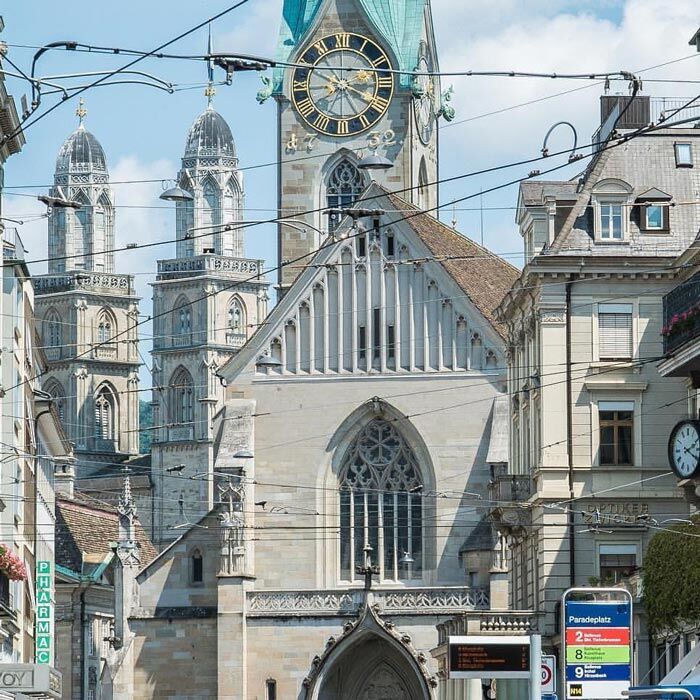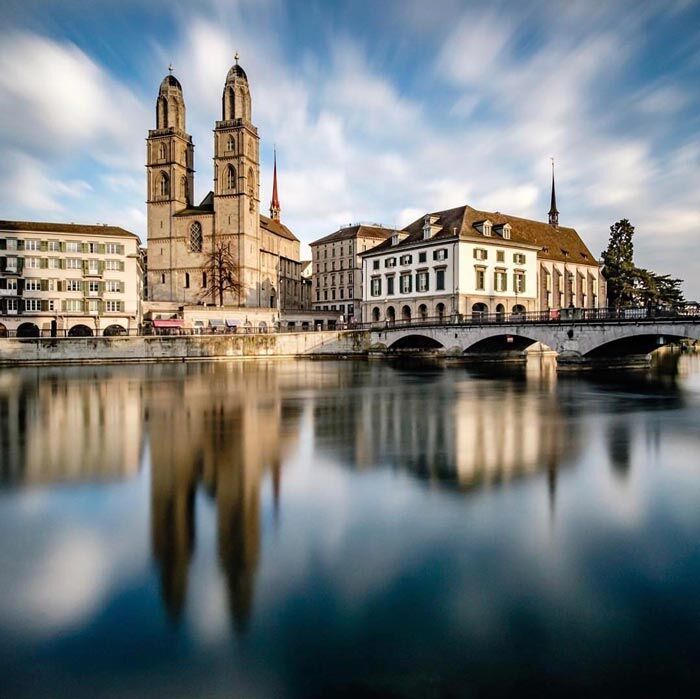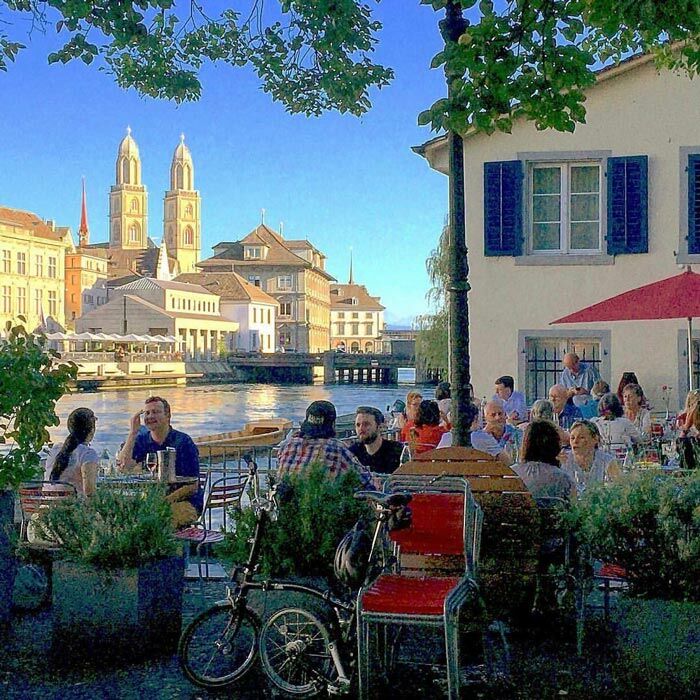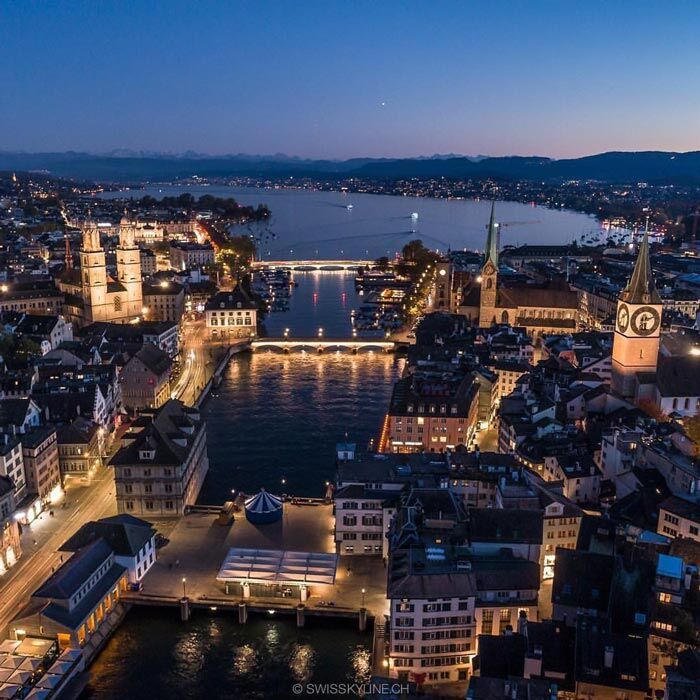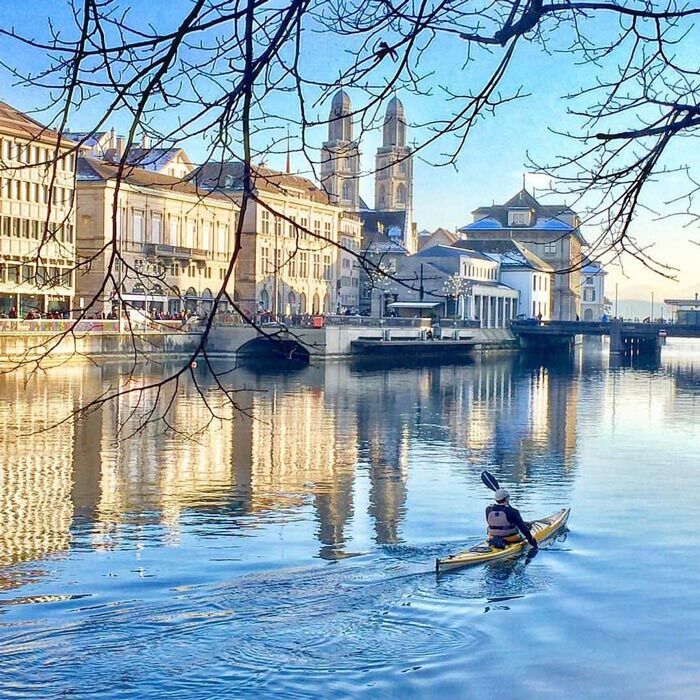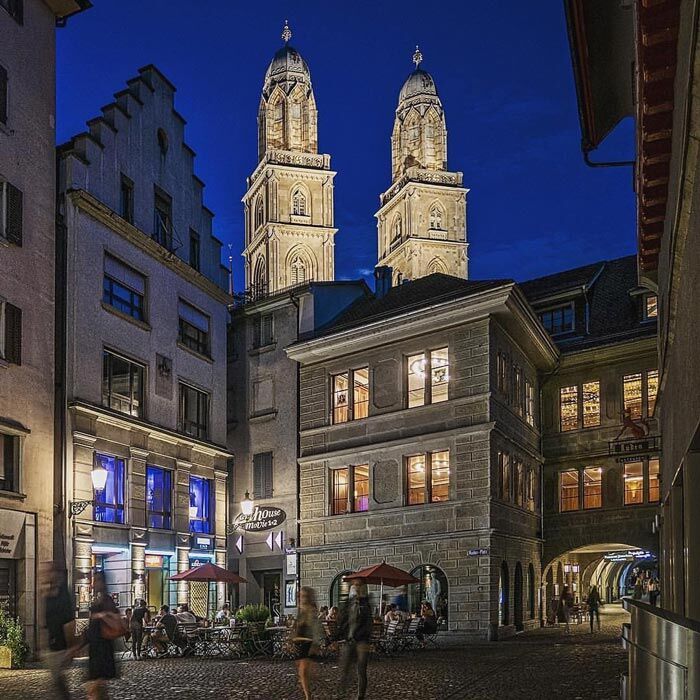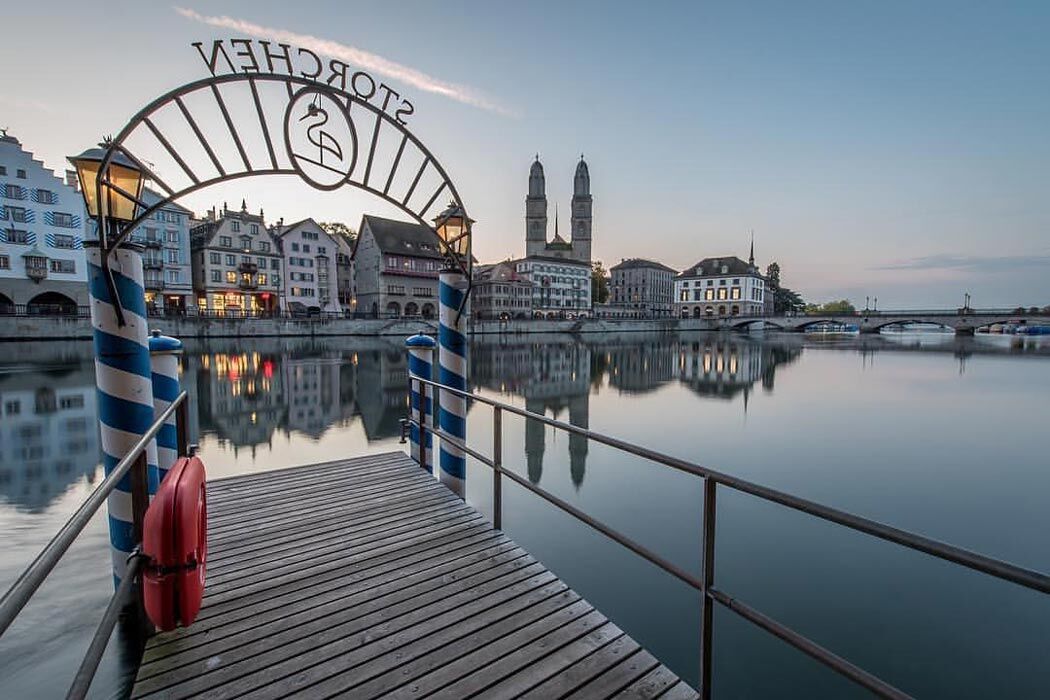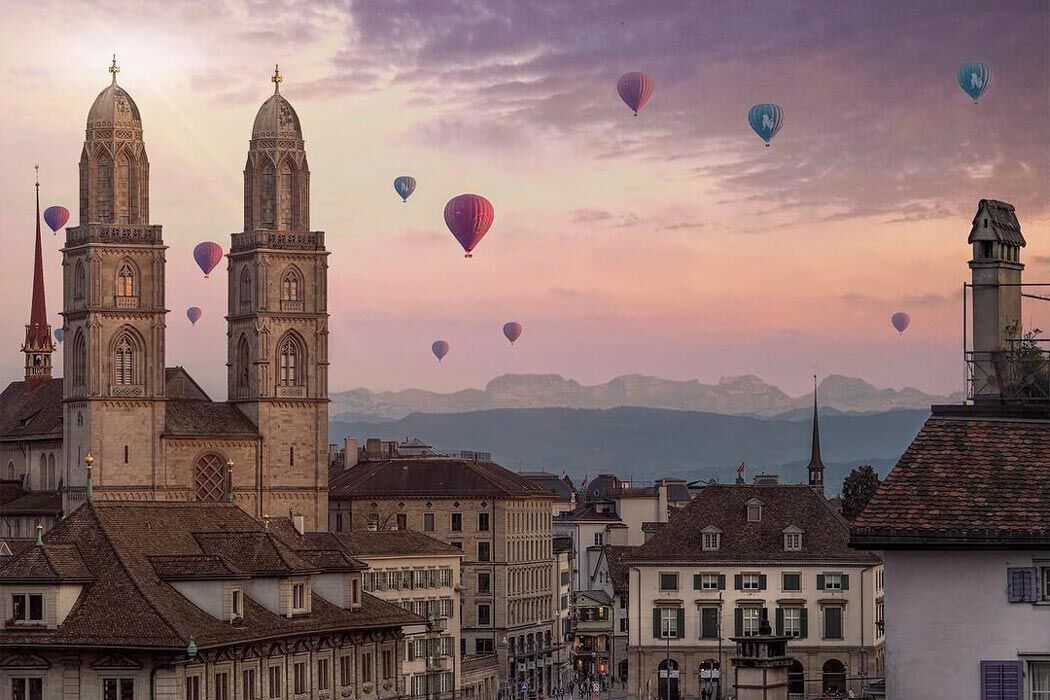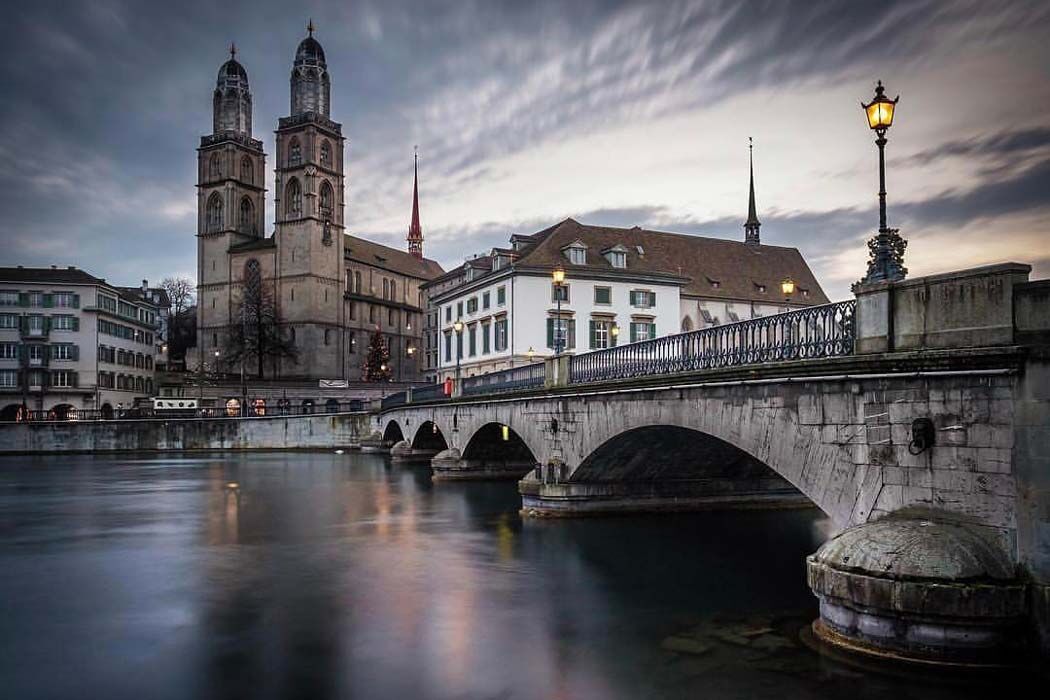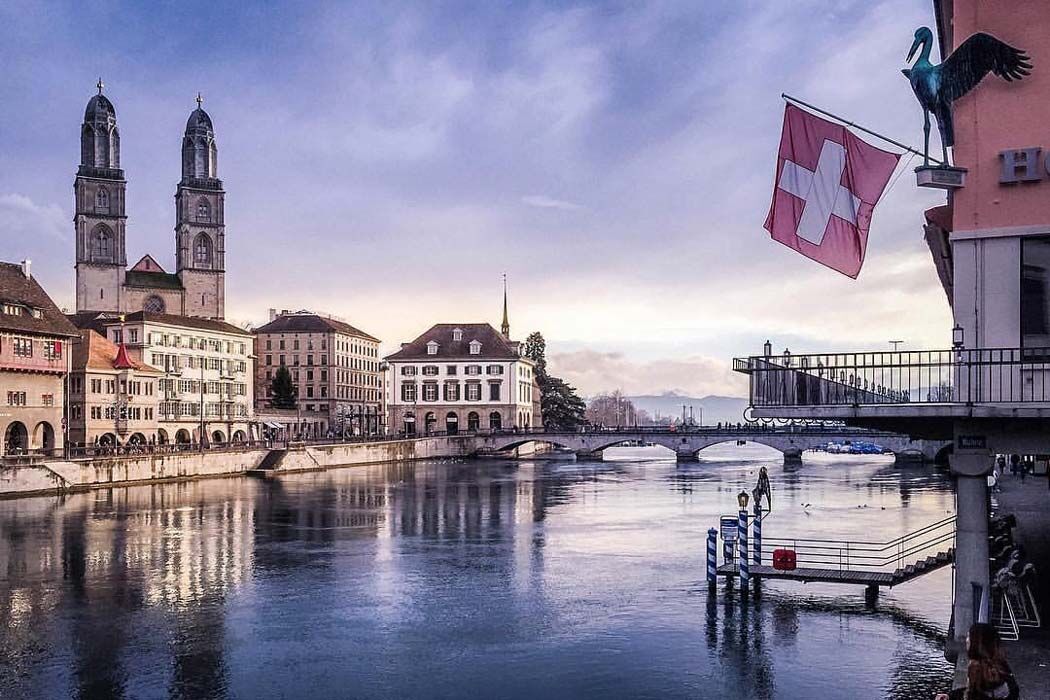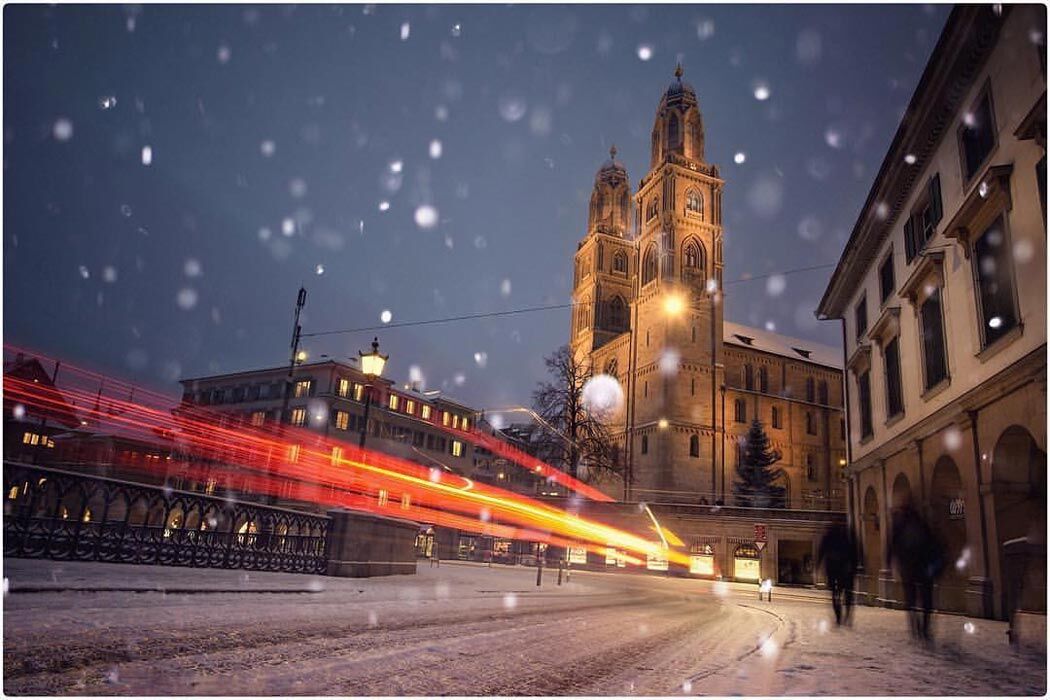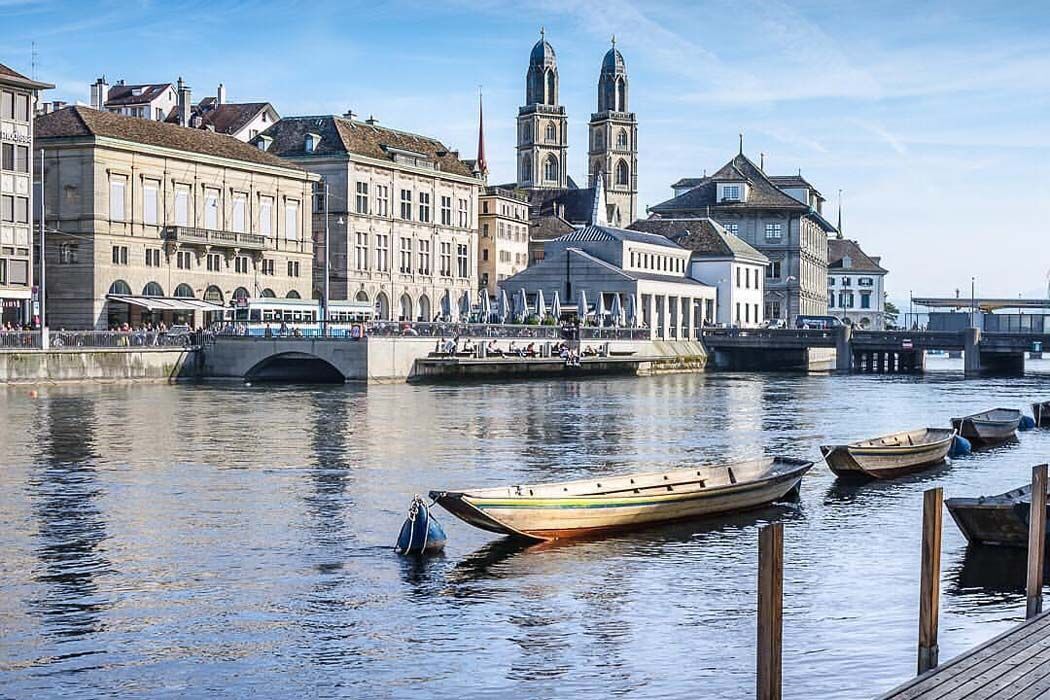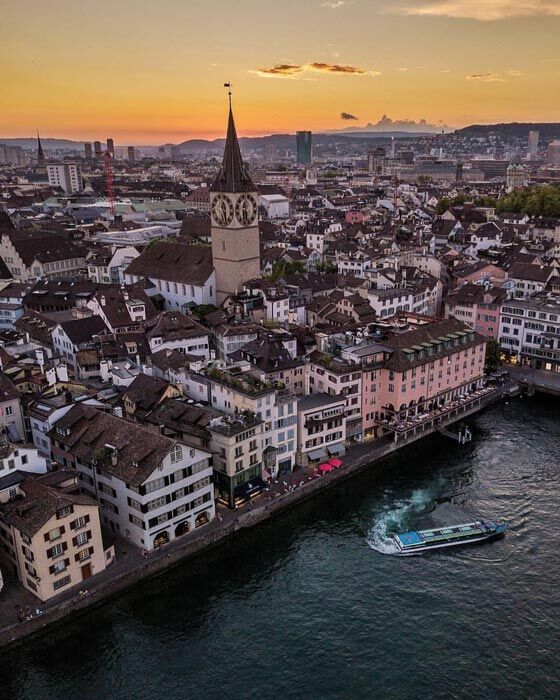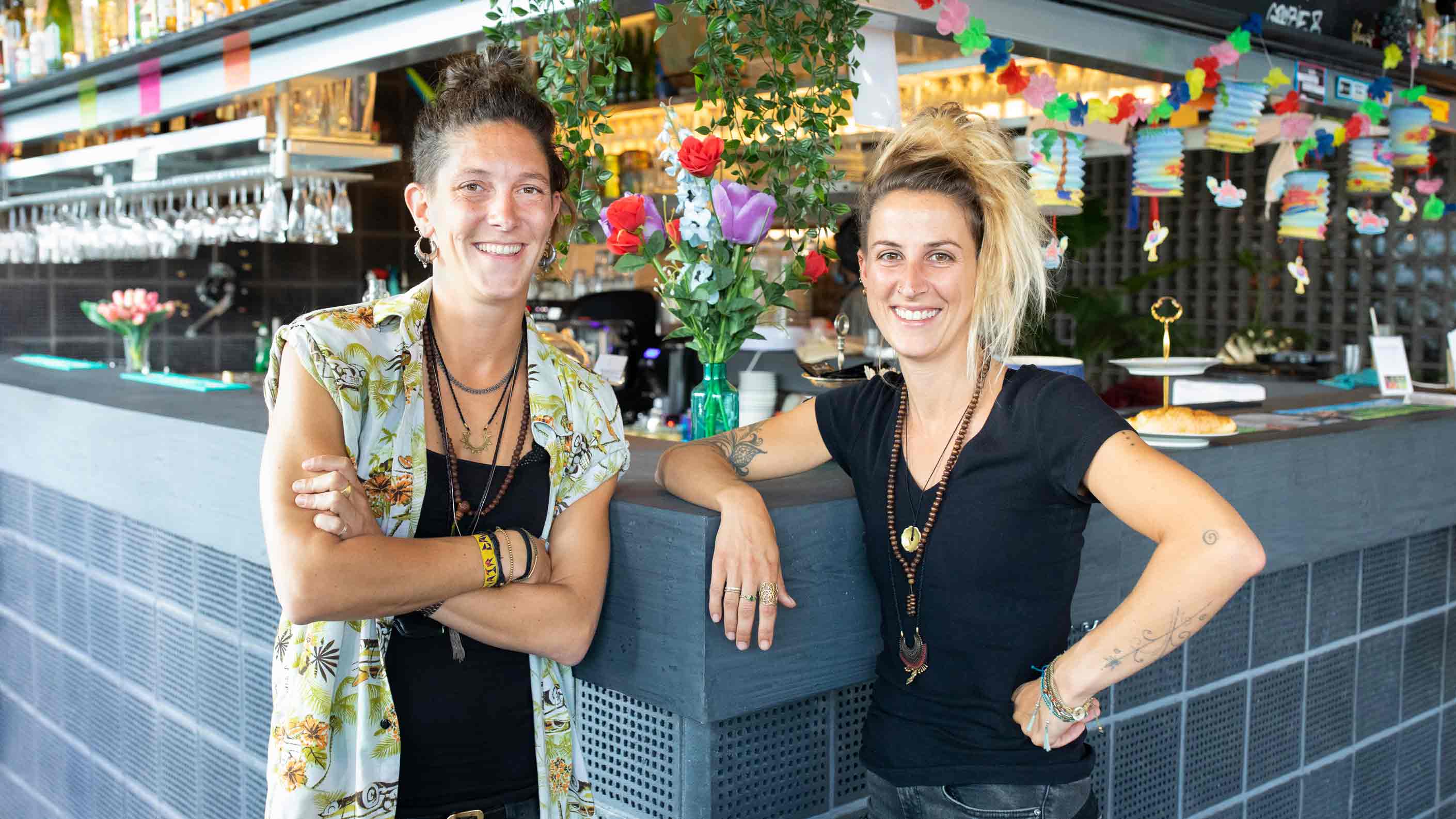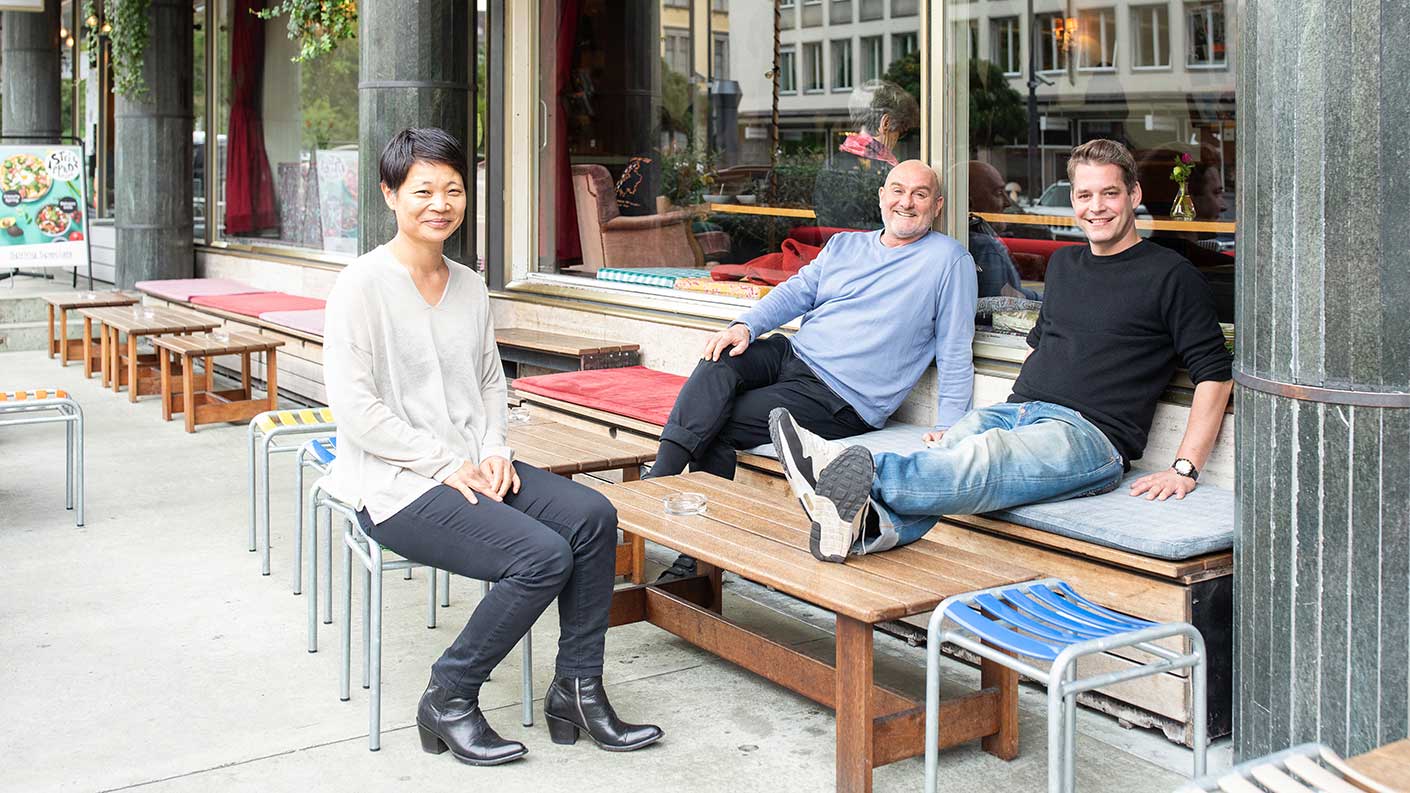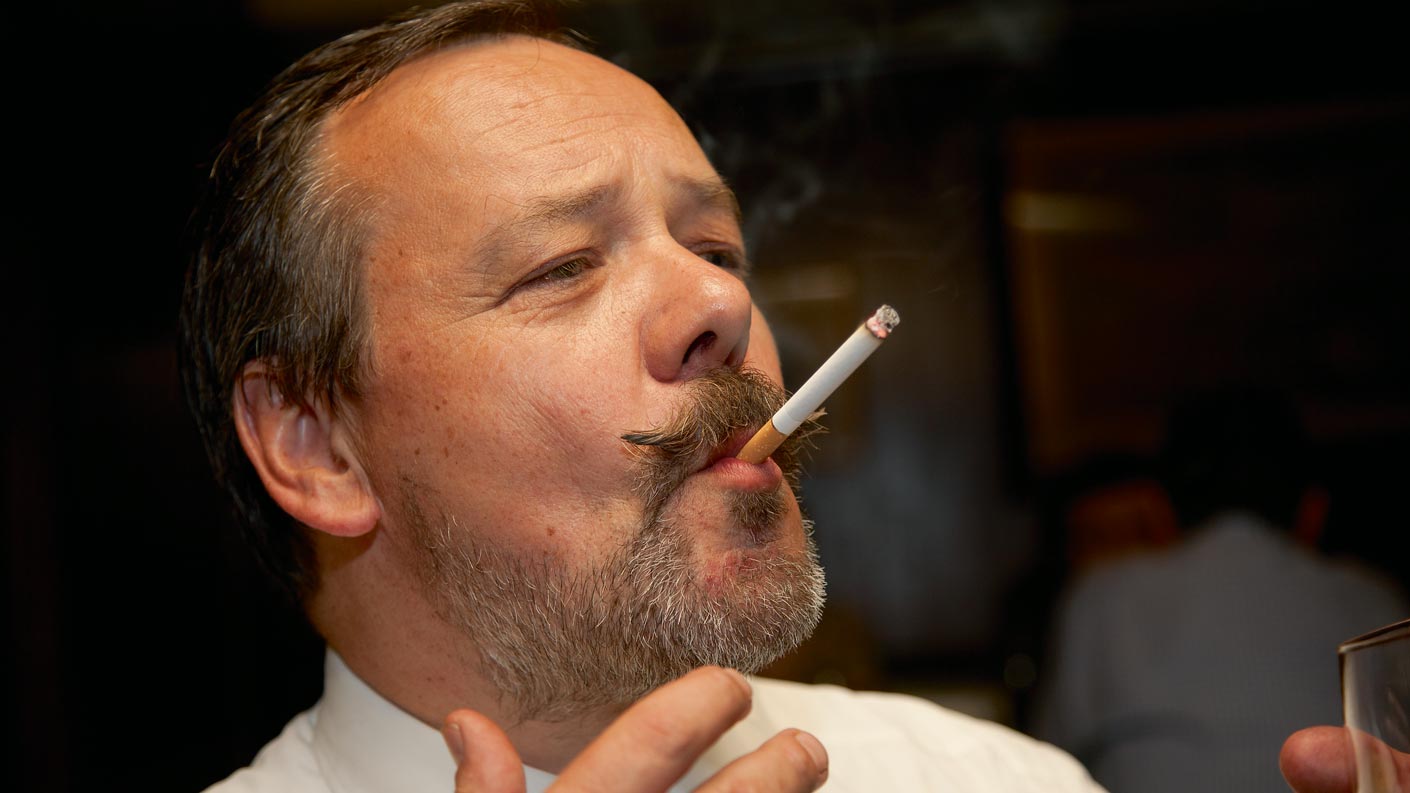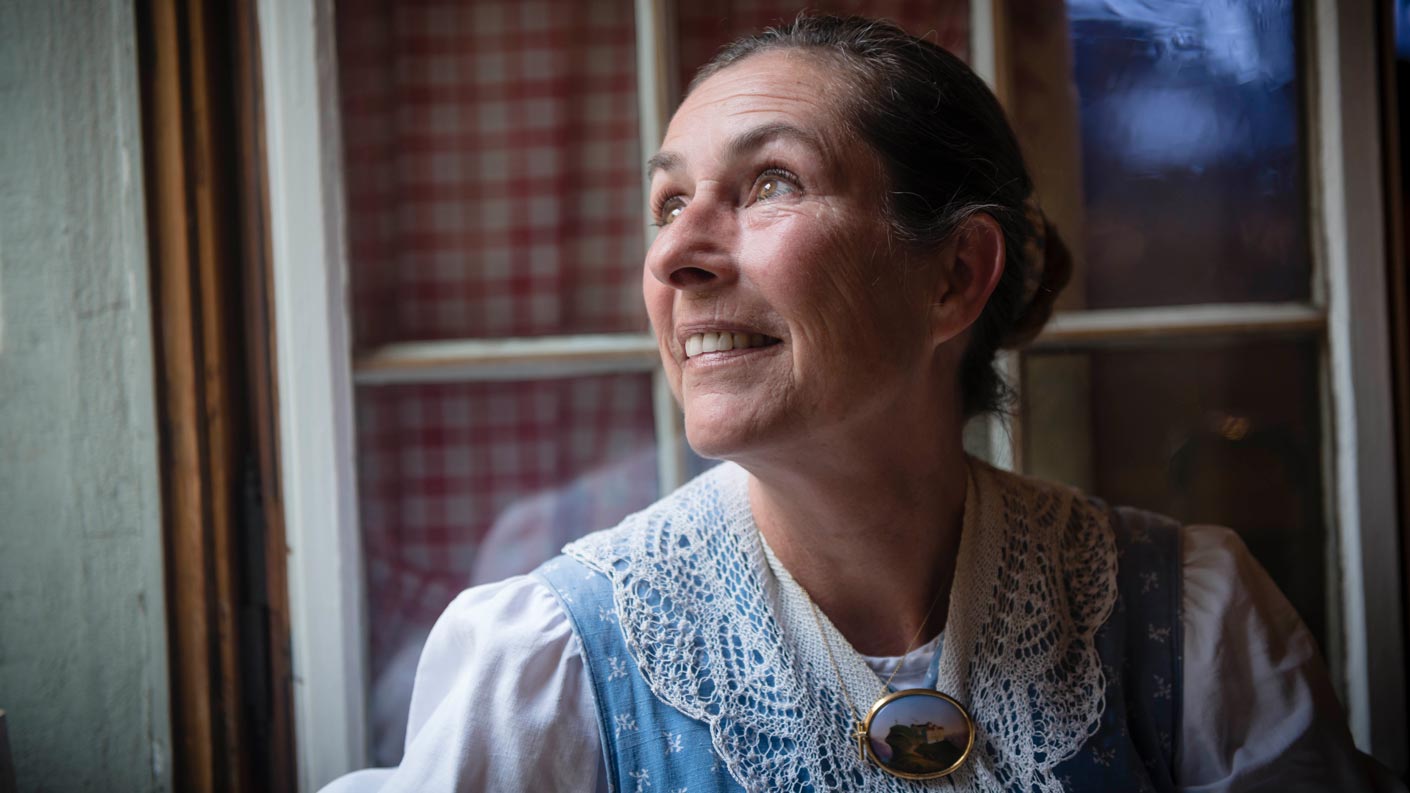Grossmünster
Francesco Gargiulo holds the key to Zurich’s main landmark. He has worked as a sexton at the Grossmünster church for the past 25 years.
Steeped in legend, Zurich’s most illustrious church is popular among residents and tourists alike. Even so, it still has to be tended to and cleaned, and this is where Francesco Gargiulo steps in: he has dedicated himself wholeheartedly to his duties for a quarter of a century. He knows every nook and cranny of the Grossmünster, has a favourite spot and encounters many challenging – as well as amusing – situations in his daily work.
The doors that seal the main entrance are huge. One of Francesco Gargiulo’s duties is to open them in the morning and close them again at night – as a sexton, he is in charge of looking after the church whose double spires are a fixture of Zurich’s skyline. ‘Quite a few foreign visitors are disappointed at first when they enter the Grossmünster,’ he says mischievously. ‘They are expecting a cathedral, but instead of Catholic pomp, they’re greeted with the frugality of the Reformation.’
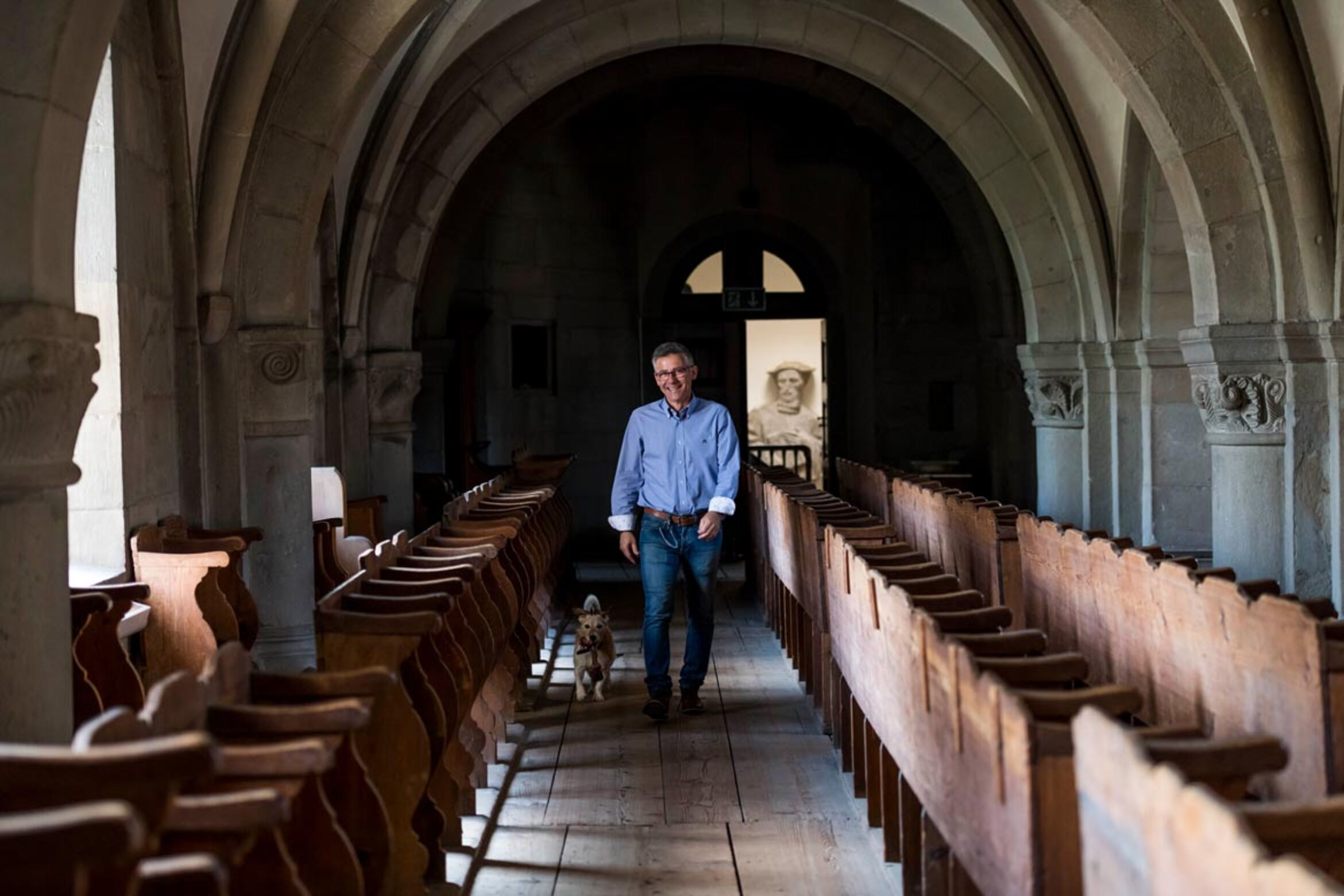
In 2019, it will be 500 years since the pastor Huldrych Zwingli brought the Reformation to the city on the Limmat. During that time, indulgences were abolished and efforts were made to remove altars and images of saints. The church, which continued to change and develop over the centuries, acquired its current visage only gradually.
According to legend, Felix and Regula carried their own decapitated heads uphill before lying down and being buried in that exact spot.
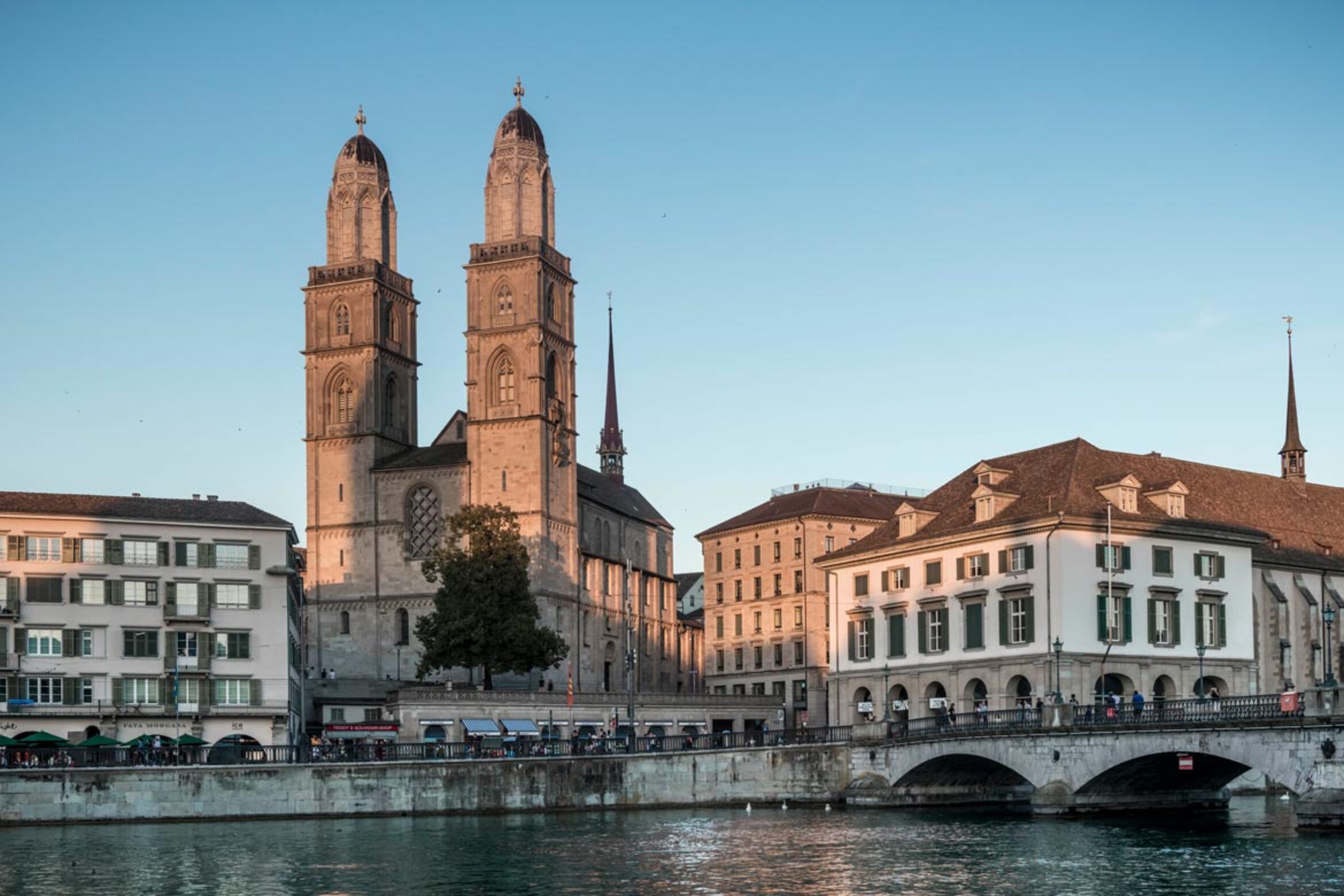
‘Somebody once asked me where the parents of Zwingli are buried,’ recalls the sexton, before laughing out loud: ‘It turned out they were actually looking for Felix and Regula.’ The patron saints of Zurich died a martyr’s death in the 3rd century CE on what was then an island in the Limmat – the site where the Wasserkirche is located today. According to legend, they carried their own decapitated heads uphill before lying down and being buried in that exact spot.
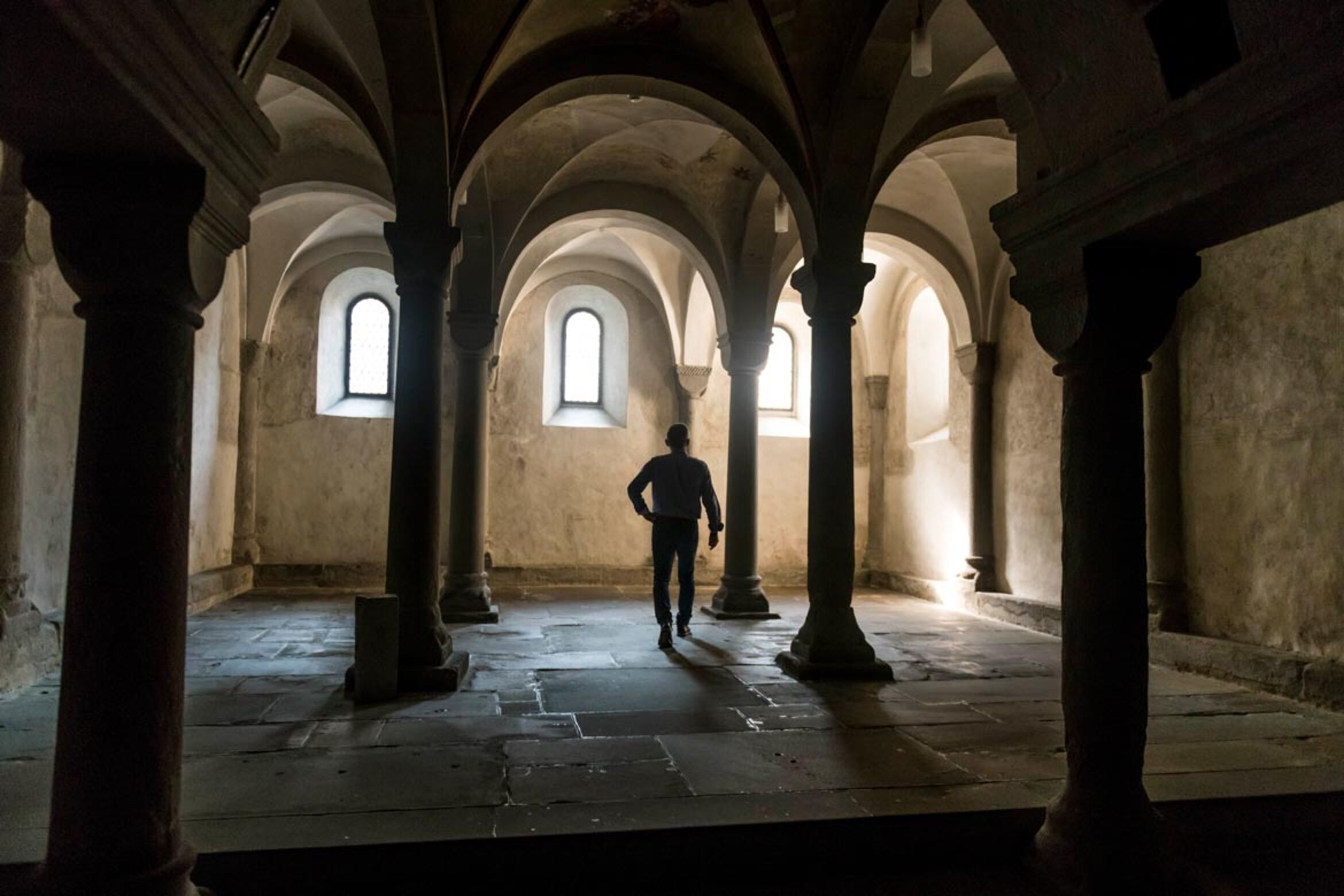
In the 8th century CE, Charlemagne is said to have rediscovered the grave during a hunt. A stag fell to its knees at the last resting place of the saints, as did the great king’s horse. Charlemagne had the remains excavated and built a church on top of the burial site. This is where the name ‘Charles Tower’ (Karlsturm) comes from. Built into the tower’s façade is a viewing platform on which a large statue of the church founder sits enthroned, taking in the spectacular panoramic view of Zurich.
‘When I started here 25 years ago, I was naive enough to want to please everybody.’
For a long time, the mortal remains of the patron saints were preserved in the Zwölfbotenkapelle chapel. Zwingli’s successor, Heinrich Bullinger, had the grave exhumed and the contents catalogued before being transferred to the ossuary of St. Peter. Today, the chapel is a place of quiet contemplation away from the throngs of visitors.
Grossmünster on Instagram
‘When I started here 25 years ago, I was naive enough to want to please everybody,’ says Francesco. He had to learn to deal with heated exchanges – including a few harsh insults – when he informed visitors that the church was about to close or asked them to eat their ice cream outside.
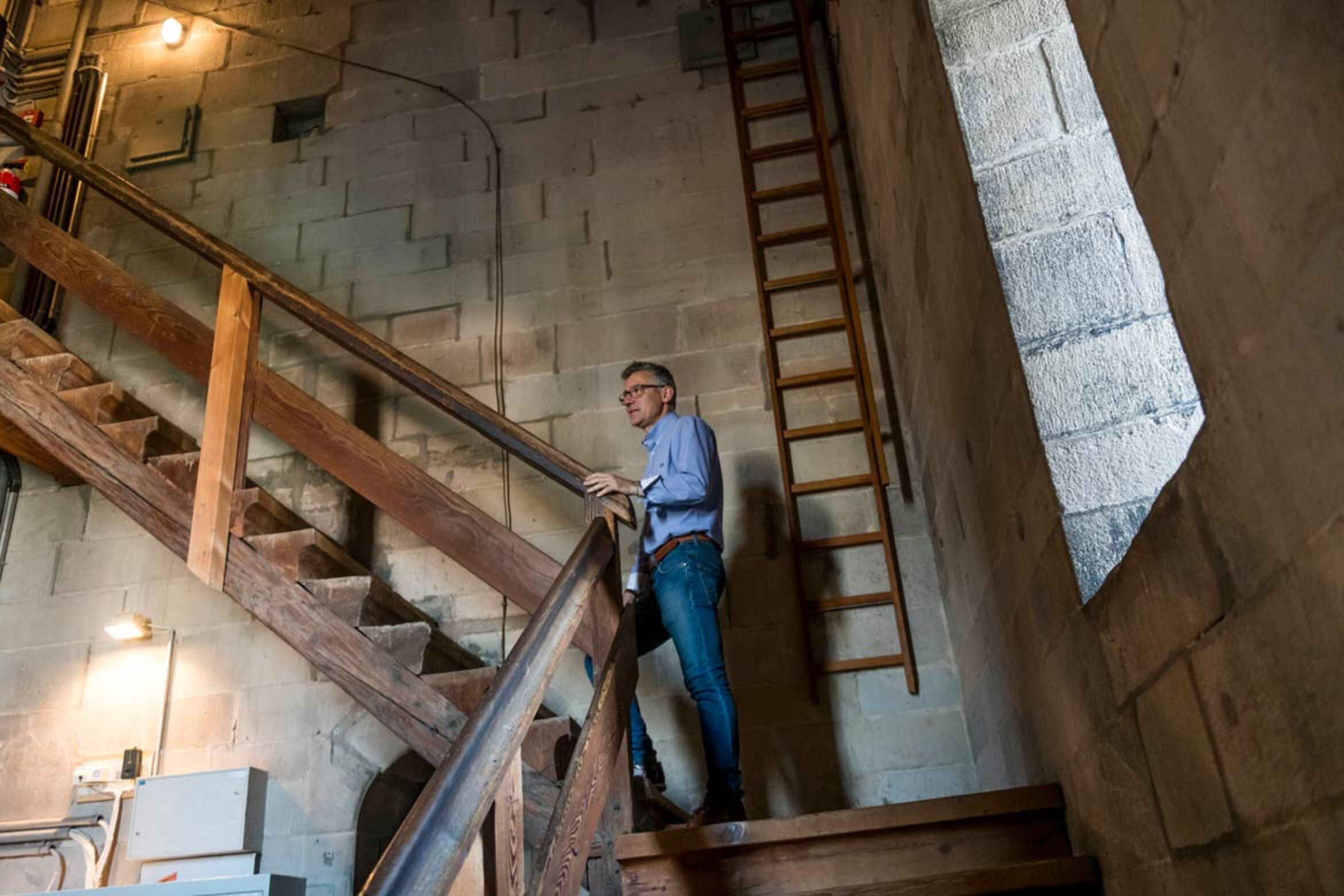
In the beginning, it was only Francesco and one other colleague. Today, the 59-year-old sexton heads a team of 18 employees. He is responsible for providing all-round assistance during religious services and special events, managing the information stand, and completing a host of administrative tasks. He also coordinates maintenance and cleaning activities for the church and the vestibule. ‘We have around 2,000 visitors a day – and they traipse in a fair amount of dirt. And while we want the church to be clean, we don’t just want it to smell of cleaning products,’ asserts the sexton.
The Grossmünster is now very much Francesco’s home away from home: ‘I’m a little sensitive when it comes to this place – I want to protect it.’
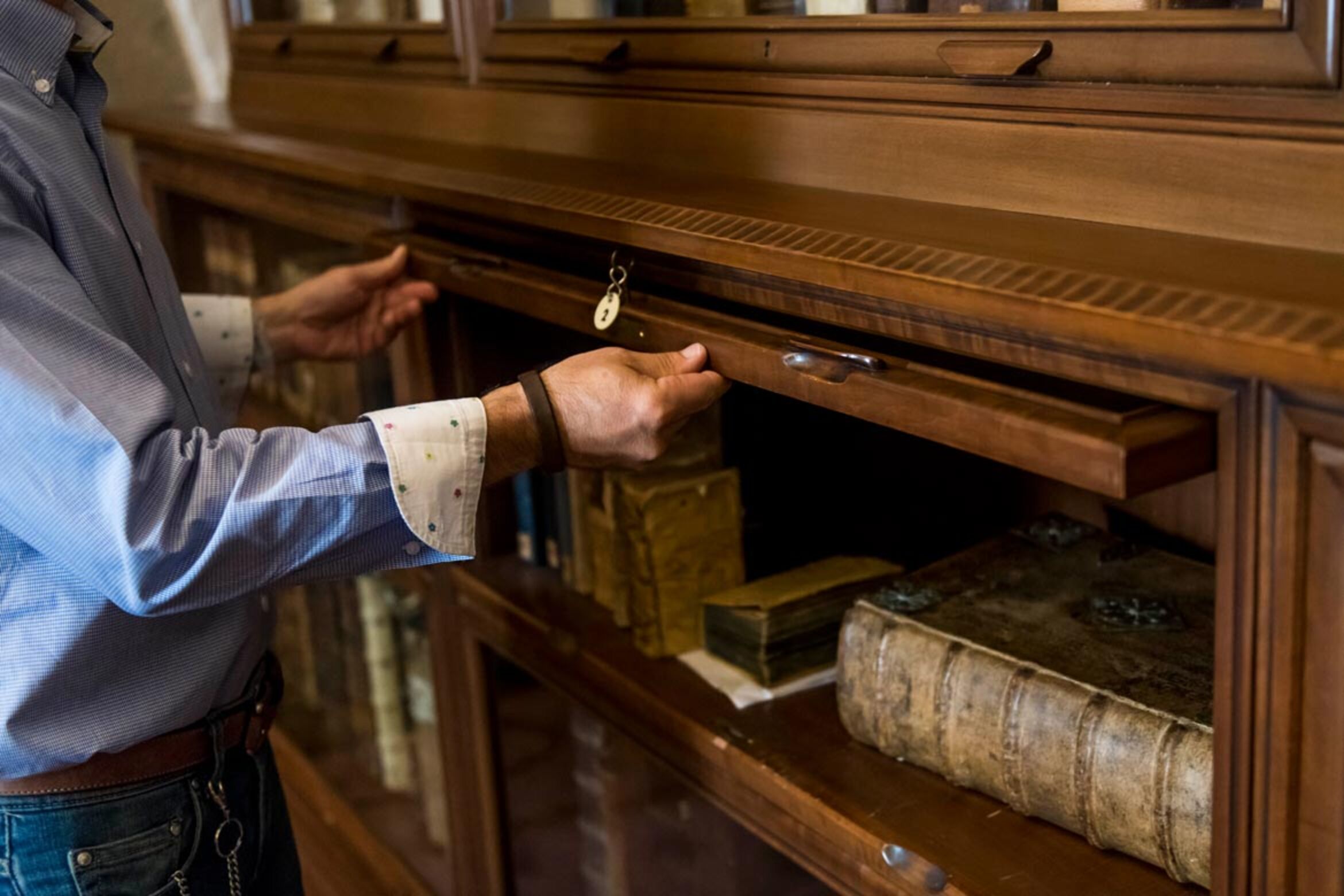
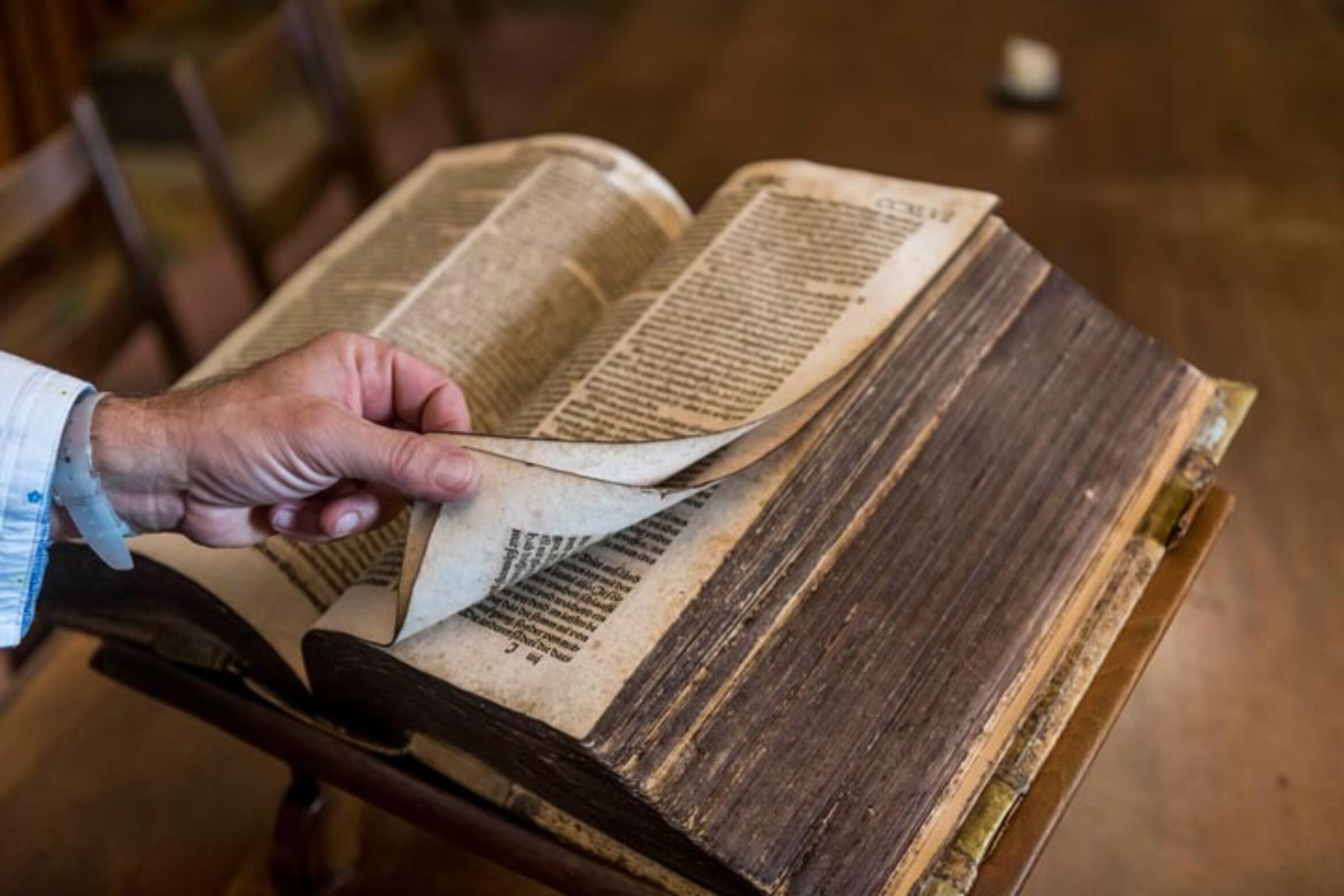
The Grossmünster is now very much Francesco’s home away from home: ‘I’m a little sensitive when it comes to this place – I want to protect it.’ For Francesco, it is important to maintain a healthy distance both emotionally and geographically. Still, this is sometimes easier said than done, particularly because Francesco lives directly opposite his place of work. With his three children no longer living at home, it is now just him and his wife.
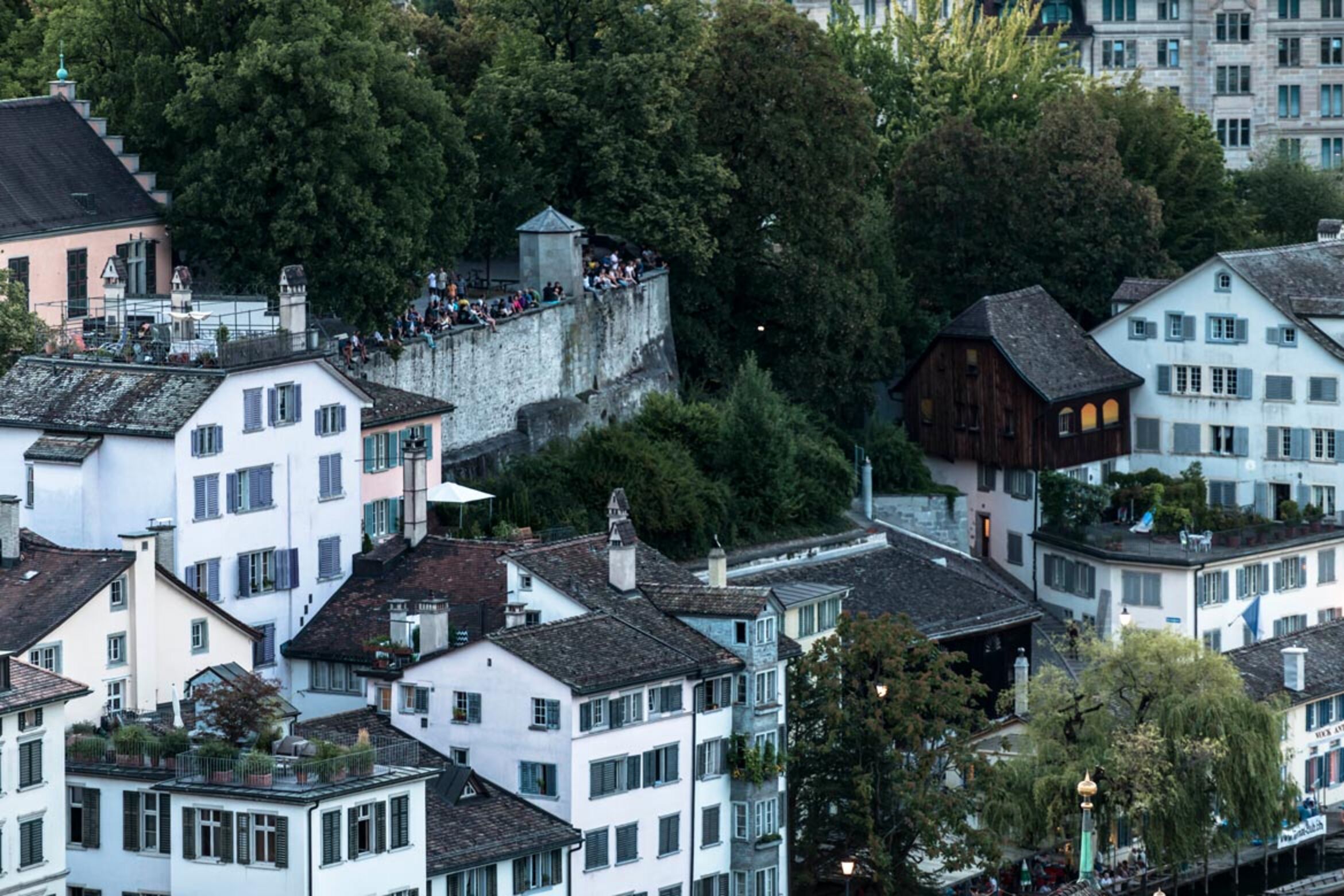
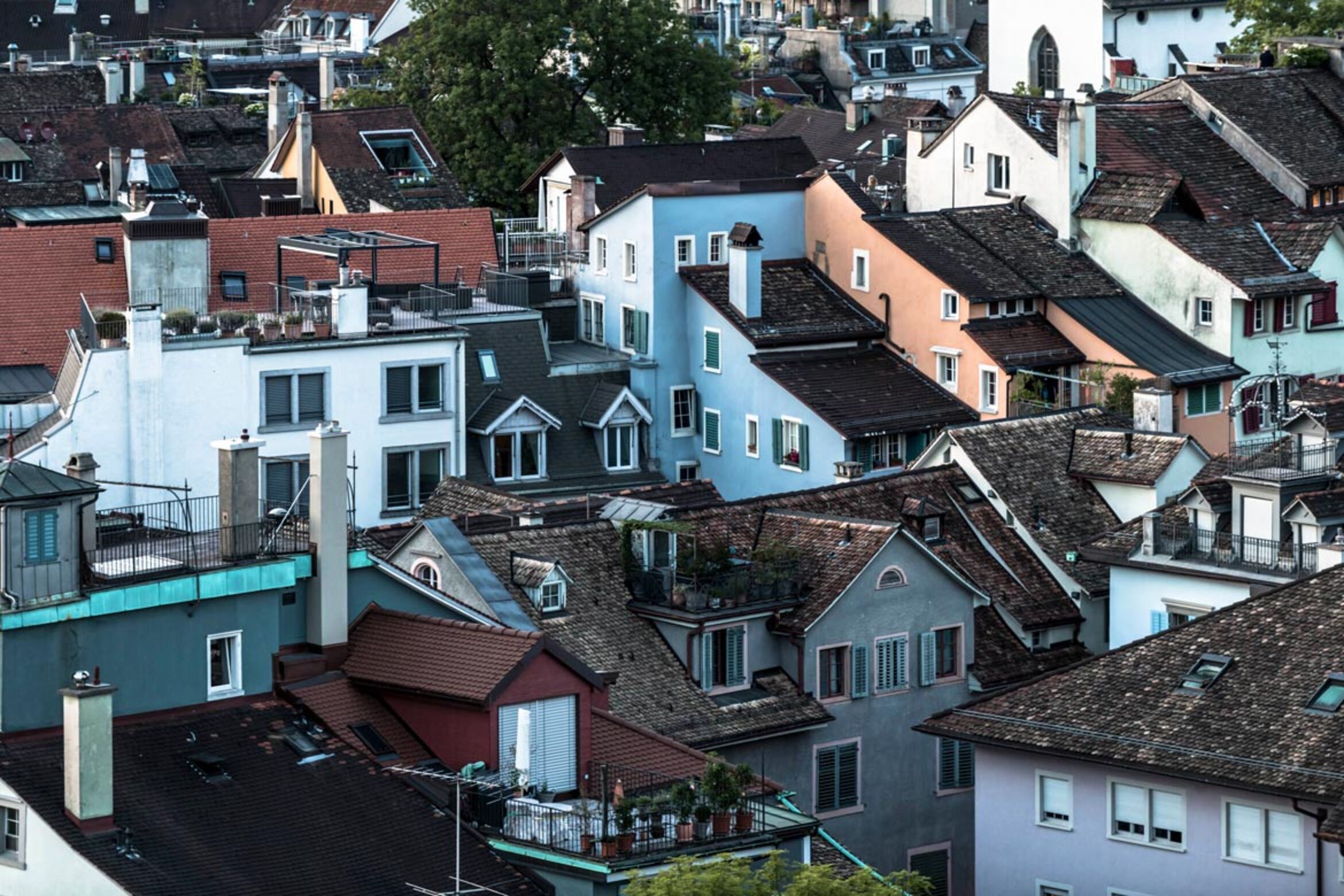
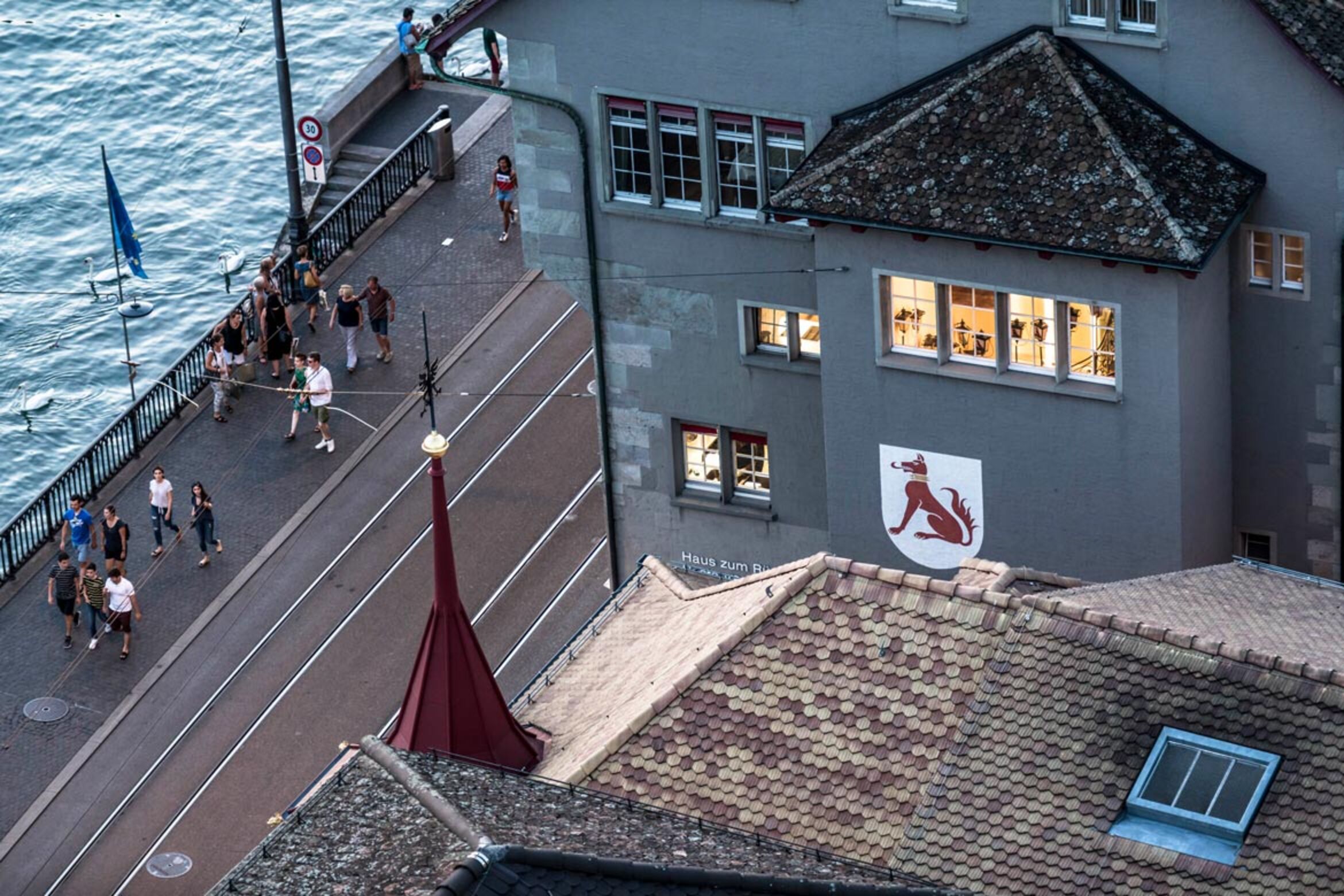
Francesco tries to focus on the many positive aspects of his work. This includes the rewarding encounters he has with other people, especially during the church tours. They are an opportunity for him to share his love of the Grossmünster and the vast knowledge he has built up over the years with adults and children alike.
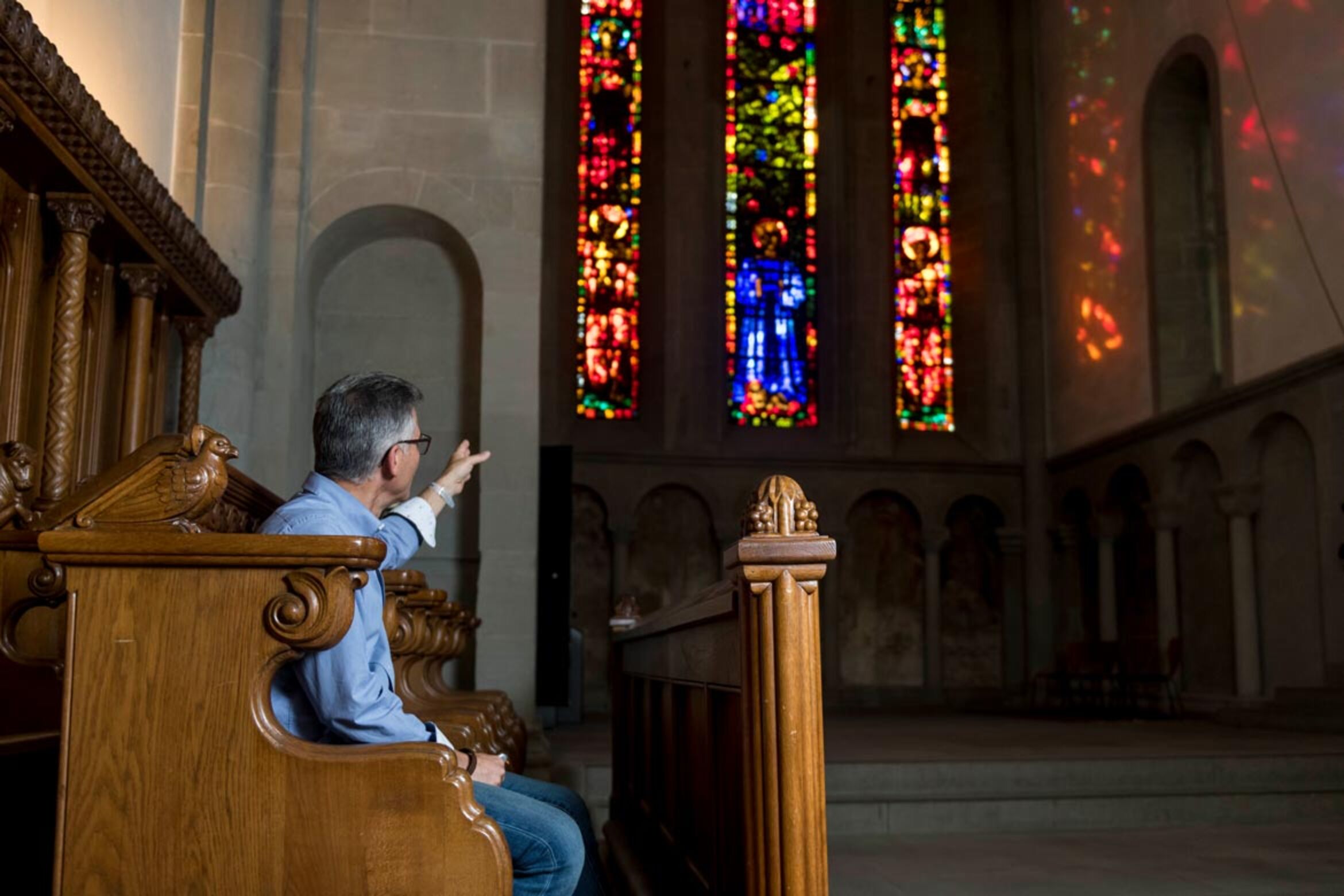
Francesco confesses that he likes to go to the crypt to pray. The oldest section of the building is a place of calm for him. He enjoys looking at the restored murals that tell Felix and Regula’s tale of great suffering, but it is the windows painted by Augusto Giacometti in the choir that garner the most admiration from him: ‘They’re just fantastic. I can look at them for hours and still discover something new.’ And what about the tourists who confuse them with the windows designed by Chagall in the Fraumünster church? Francesco’s only response is a trademark mischievous laugh.
Address
Grossmünster
Grossmünsterplatz
8001 Zürich
Website
Opening times
Grossmünster
March to October: 10 am – 6 pm
November to February: 10 am – 5 pm
The church is closed on special occasions (e.g. funeral services or weddings). For concerts, the doors of the Grossmünster generally close one hour before the concert starts. On Sundays, tours are available in the afternoon.
Karlsturm (Charles Tower)
March to October, during the week: 10 am – 5:30 pm
Sunday: 12:30 pm – 5:30 pm
November to February, during the week: 10 am – 4:30 pm
Sunday: 12:30 pm – 4:30 pm
Info
Concerts and tours of the premises are held in the Grossmünster church alongside regular religious services and prayers. Further information is available here.
